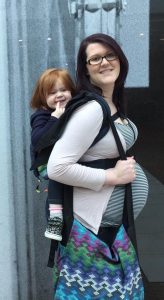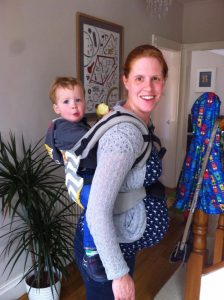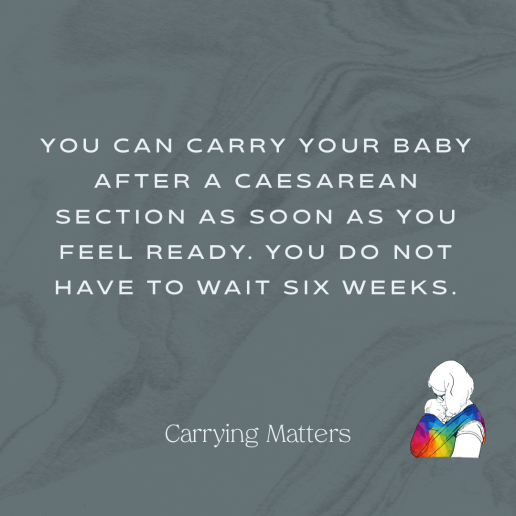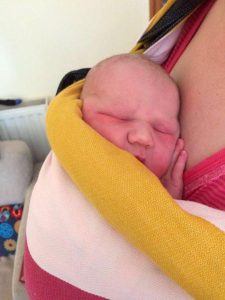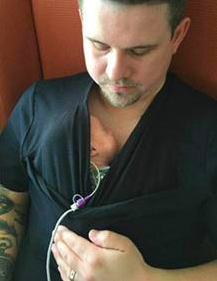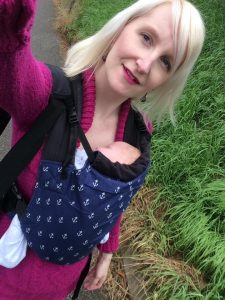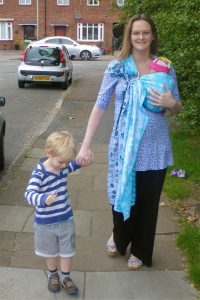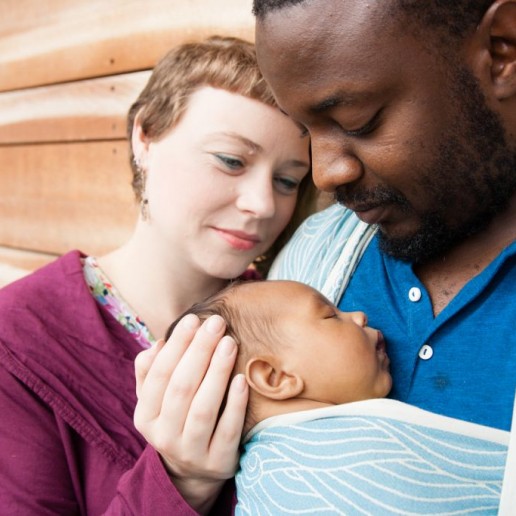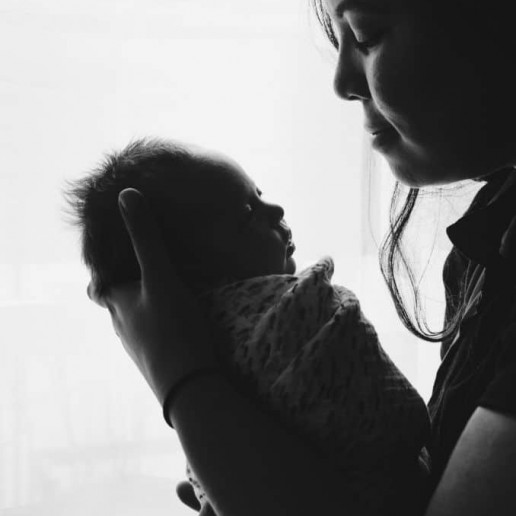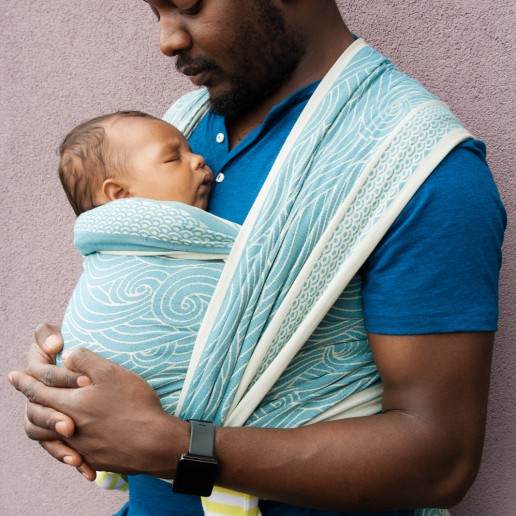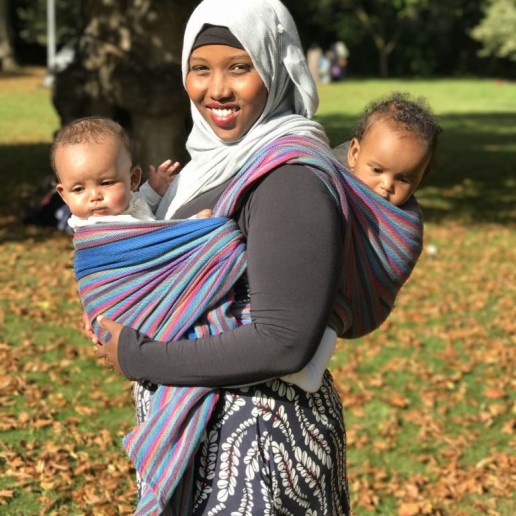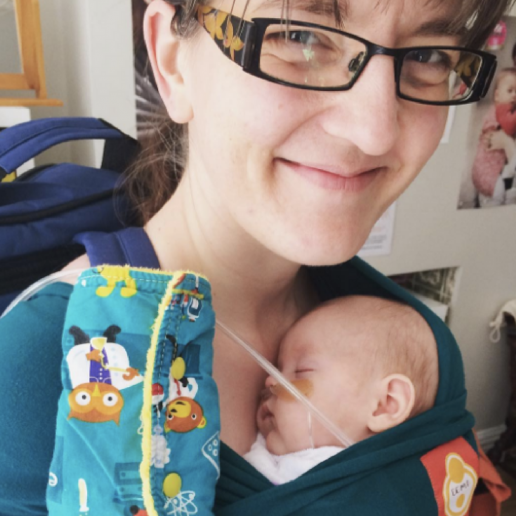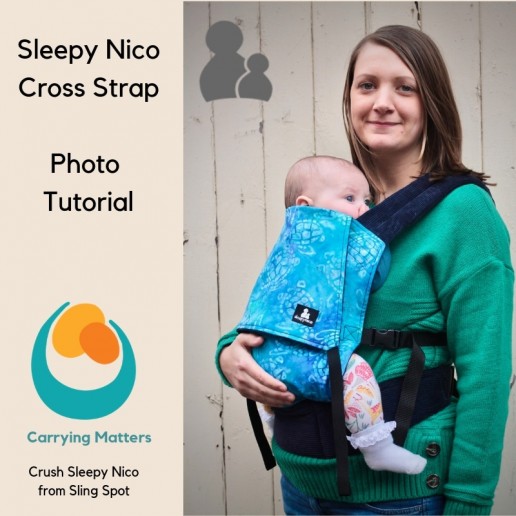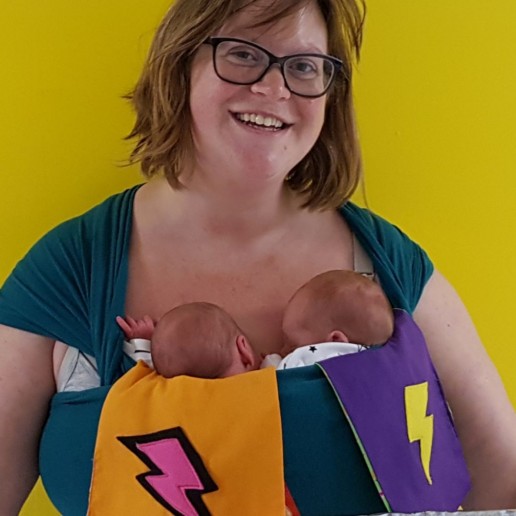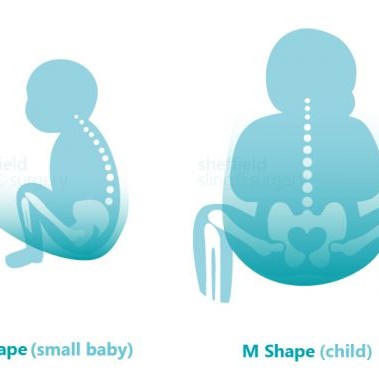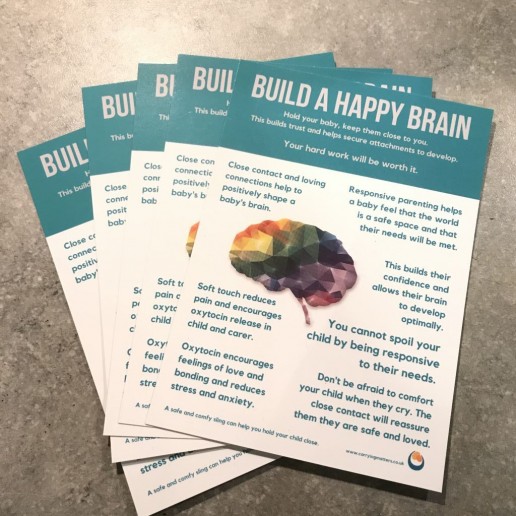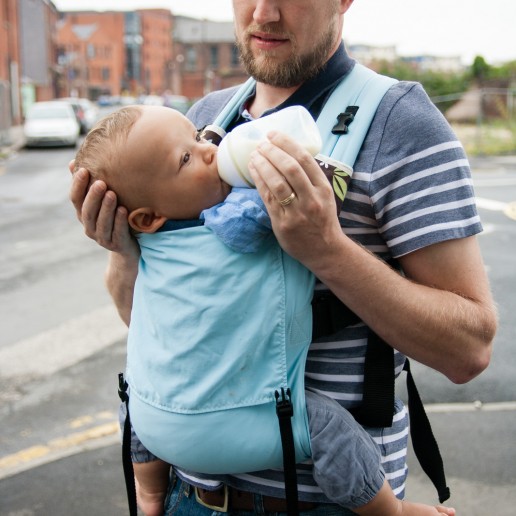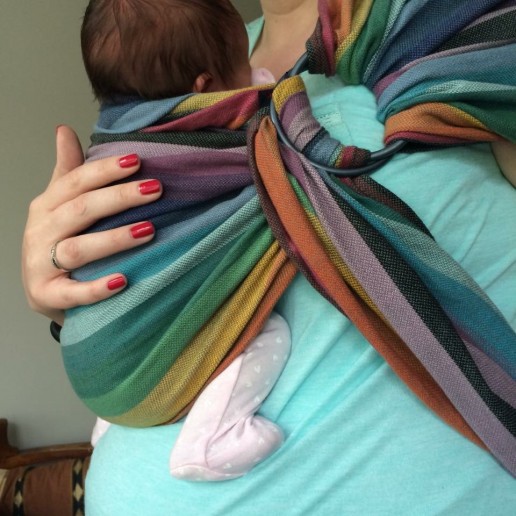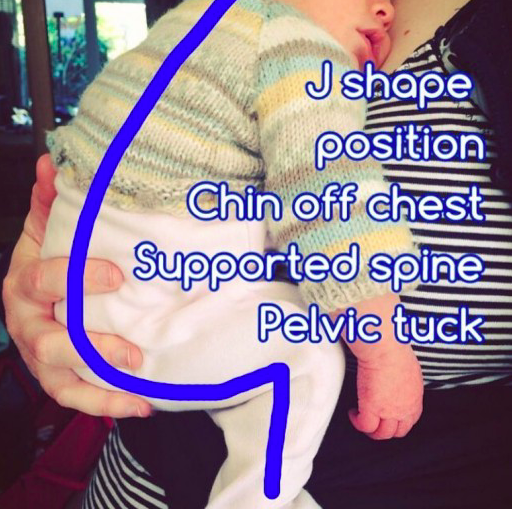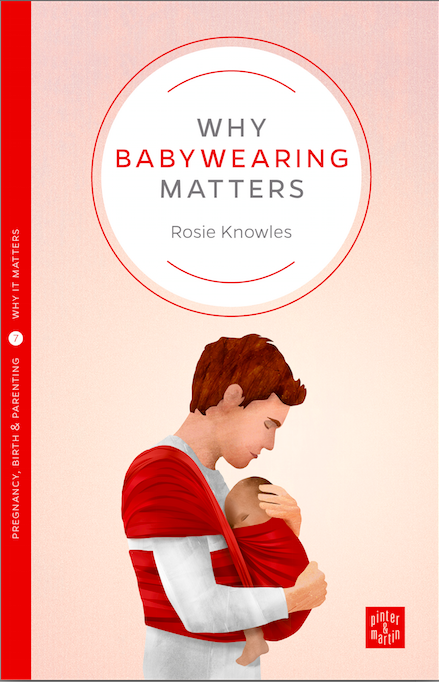Guide to Slings
A guide to slings: choosing to carry your child is just the start of an adventure you can share together and both derive a great deal of enjoyment from! It can often feel overwhelming, trying to decide what to try first when there are so many options and everyone has their own favourites. Our guide to slings is designed to help you understand the basics of safe sling use and to know more about the major types of sling.
Useful videos can be found here and the photo tutorials here.
Read more about Common Queries here (such as facing out, carrying in the post-natal period, healthy hip positioning)
Read more about Carrying in Special Circumstances here (such as carrying while pregnant, carrying older children, carrying premature babies)
Do get in touch if you need some help.
Sleeping while your baby is sleeping in a sling
Sleeping while your baby is sleeping in a sling - is this safe?
Imagine the scenario, familiar to all of us.... you are a very tired parent, with a new baby who doesn't seem able to settle down in their Moses basket or cot, and will only sleep when held and rocked. Your baby cries when he is laid down again, no matter how deeply he seemed to be asleep on your chest or your partner's shoulder just a moment ago. This is where you might turn to a baby carrier (typically a stretchy wrap, or a ring sling, sometimes a buckle carrier or a meh dai), which keeps your baby close, in the supported position she loves, able to hear your heartbeat and breathing, everything smells right, it is warm, she is surrounded snugly with gentle pressure all over and not flailing freely in open space. (See here for more information on the "fourth trimester" theory of meeting baby's needs.)
So far so good, your baby is positioned well in the sling, airway is protected, breathing is unobstructed, spine and head are well aligned with a supported upper back and a gentle curve into a tilted pelvis. You can see that your baby's face is visible and he is close enough to kiss, there is no slumping, your rocking movements (swaying, walking) and precious closeness and feeling safe in your arms has worked its magic, and your baby is at last, peacefully and contentedly asleep.
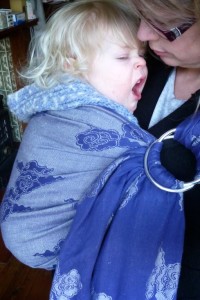
At this point, I remember it well, the relief is enormous. The temptation is very, very strong, to just sit down in a cosy armchair and close your eyes, or a have a little lie down on the bed well propped up with pillows. Soon sleep starts to overwhelm you. Just a a short nap.. a few minutes won't hurt, surely, a chance to recharge my batteries for the next parenting challenge.. sleep is so restorative!
The trouble is, one of the central tenets of safe babywearing is to be aware of your baby at all times.
- The TICKS rules and the ABC guidelines are all aimed at protecting your baby's airway and breathing, and the only way you can monitor this is by being alert.
- It doesn't take long for a baby's breathing to become compromised, and the risk is greatest under four months, when their heads are disproportionately large and heavy and they have not yet developed the cervical stability needed to support themselves.This takes time - the vertebral bodies need to become strong enough to support the head, then the joints, ligaments, muscles, tendons and other soft tissues in the neck need to develop the required strength, and then the back muscles need to be strong enough to pull the heavy head backwards to avoid forwards or sideways slump. This is an active process, and it is easy for a sleeping baby's head to roll forwards onto their chest. This is why head support is so vital, and why a baby's face must be visible at all times.
- This is the same reason why children should not sleep in car seats if possible. We've all seen children with their heads hanging forwards at awkward angles. Studies have shown that this forward lolling of the head can cause desaturation (reduced levels of oxygen in the blood). In contrast, another study has shown that a baby asleep in the optimal upright position with chin up and the head well supported on parent's chest does not show such desaturations. It is safe for a baby to sleep upright in a well fitting and supportive sling if the appropriate guidelines are followed.
- It is also is why bag slings and near-horizontal cradle carries can cause such problems. The enclosing fabric behind the head is dangerous; Babies have heavy heads, more prominent occiputs, and do not yet have the strength to pull their heads up or push against the fabric. The chin ends up resting on their the chest, causing a potential airway compromise.
- It is also why feeding in a sling needs to be undertaken with caution and a good understanding of safety.
- It is why there are so many guidelines about safe sleeping while responsible for a child (whether or not you are using a sling).
A sleeping parent will not be able to check their baby's position often, and correct any breathing difficulties quickly. Grunting or snoring or other unusual noises should always prompt a check on your baby's position and it will be very hard to be aware of such changes while you are almost, or fully asleep.
Your body position will change as your muscles relax in sleep. Your arms may move if you are just holding your baby, and if baby is in a sling, it may no longer remain tight and supportive, possibly allowing him to slump over or curl up into a ball with his chin on his chest, or roll to one side. We've all seen this with babies in car seats. You yourself may roll over as you relax and unwittingly place too much pressure on parts of your baby's body, or encourage him to roll with you.
In short, while you are asleep, you are unaware of what you or your baby are doing. This is why there are so many guidelines about providing a safe sleeping environment for babies, keeping them safe when there is nobody awake.
If you have had something alcoholic to drink, are a smoker, are on medications that could make you drowsy, or have a medical condition that could impair your ability to be aware of your child at all times, you may wish to reconsider how you are caring for your baby when you are tired.
There are of course some ways that a short nap could be done safely with your baby asleep in your arms or in a carrier. For example, if your partner remains in the room with you and alert while you and baby enjoy a rest together, in a slightly-reclined, well supported position that ensures baby is still upright. You may be in hospital with your premature baby and are encouraged to share skin-to-skin contact inside a simple stretchy wrap or boob tube or under a blanket. You and your baby will be very closely monitored throughout if you do nod off in the chair (which often recline at special angles to make it easy for a baby to rest on their tummies, chest to chest with heads well supported.)
If you wish to sleep with your baby close to you, with or without a sling, all the principles for safe co-sleeping apply. The links below explain safe bed-sharing very well.
KellyMom summary - http://kellymom.com/parenting/nighttime/cosleeping/
Mother-Baby Behavioural Sleep Laboratory - http://cosleeping.nd.edu/safe-co-sleeping-guidelines/
BASIS Online - https://www.dur.ac.uk/resources/isis.online/pdfs/ISISPDFbed-sharingJuly2013.pdf
UNICEF Caring For Your Baby at Night http://www.unicef.org.uk/Documents/Baby_Friendly/Leaflets/caringatnight_web.pdf
If you feel at the end of your tether with your unhappy sleepless little baby, this link "How to calm crying infants and get a little more sleep" is an excellent article from Sarah Ockwell-Smith.
Understanding your child's normal sleep habits and modulating your expectations accordingly can be really helpful.
So, is it safe for you to be sleeping while your baby is sleeping in a sling? My answer is, that's your call to make, depending on your circumstances. On the whole, I think the risks vastly outweigh the benefits.
Is it safe for a parent to sleep with their child loose in their arms? Again, my answer is, that's your call to make, depending on your circumstances. On the whole, I think the risks vastly outweigh the benefits.
I would always recommend reading the safe bed-sharing guidelines above to ensure both you and your baby gets the safest night's sleep possible.
Types of Slings
Different slings suit different families at different stages; one type definitely does not fit all. It is like shoes; what fits your friend, or someone on the internet, may not fit you or your baby, choosing a sling is best done by trying things out!
Here is an introduction to each of the major types of sling, which will help you to assess which might suit your baby and your lifestyle best, and how to use it. Remember it can take a little practice for you both to get used to a carrier.
Welcome to Slings
Welcome to the wonderful world of slings! You may be new to carrying and a bit overwhelmed about the choices available. You may be just starting out with your carrier and not sure if it’s the best or most comfortable option and wonder what else there may be. Read on for more information about how to make babywearing work for you, your baby and your family.
“Using a carrier does not mark you out as a particular type of parent, who subscribes to particular cultural beliefs; it simply means that you are choosing to keep your child close, according to your biological instinct and their biological needs, making life work in the best way that you can.” – Dr Rosie Knowles, Why Babywearing Matters
New to slings?
Not sure where to start when it comes to using a sling? This is a common concern among parents who have become convinced of the benefits of carrying their baby but feel a bit all at sea about the huge variety of slings and the confusing jargon in the sling community.
- There are many positive effects of using a sling with a very young baby; there is much evidence to suggest that skin to skin contact between mother and newborn (especially premature) babies can confer great advantages on both. The baby gains assistance with their physiological regulation of breathing and heart rate, temperature control is improved, and the contact helps to establish breastfeeding and promote more rapid growth compared to babies who are not held as close for as long. Furthermore, the baby will feel more secure in his developing relationship with his caregiver, due to the time spent in close contact.
- The caregiver enjoys positive effects too; he/she may find themselves more able to bond with their baby, due to the increased release of oxytocin, and post-natal depression may be reduced. Being able to be “hands-free” can really make a difference to a family’s ability to get around with their new baby, keeping them active and engaging with normal life.
- There are also many positive effects for society; such as a reduced burden of mental health and greater fitness.
Firstly, make sure you choose a sling that allows you to carry safely.
This is especially important with young babies who are still small and in need of “fourth trimester” nurturing. In summary, a baby’s airway should be supported with the head well aligned with the spine, thereby avoiding curled-up into ball positions that could impair breathing. Carriers must not be too tall, do not be tempted to tuck your baby’s head down inside a carrier for “head support”.
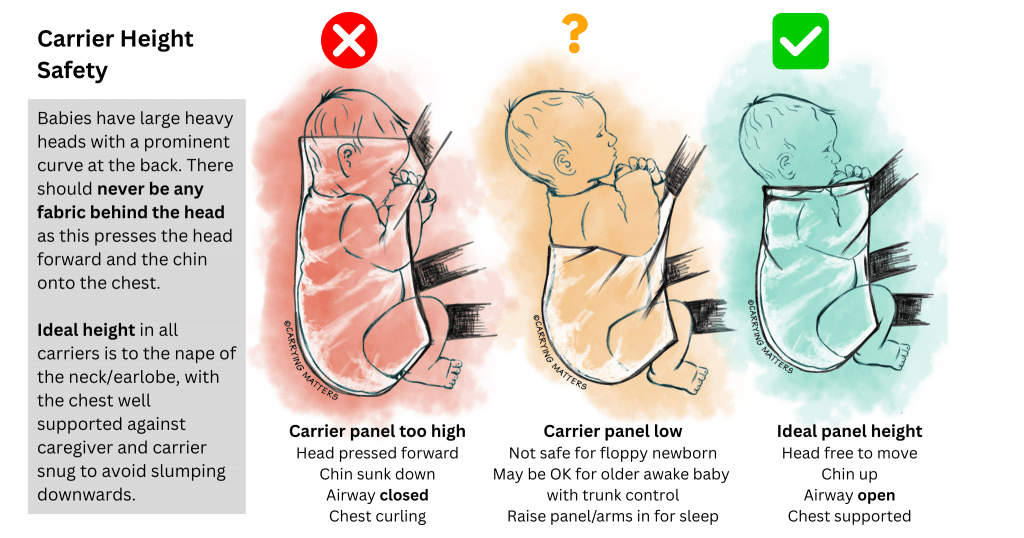
Ergonomic slings will respect this and carry a baby in a seated position, with the knees above the bottom. By bringing knees up, babies’ hips are rotated and do not need to be spread very wide to be resting comfortably, as the image shows. Narrow-based carriers (sold by high-street shops and online) are not always unsafe, but they are often suboptimal and may not be as comfortable for a baby to rest in as one that has a wider seat and encourages the knees to be raised.
Such hip-healthy positioning also helps to stabilise a baby’s back and protects the airway, as it reduces the amount of backward head lolling and uncomfortable straightening of a baby’s curved spine.
Click the link to read more about safe positioning in a sling and click here for information about healthy hip positioning.
This baby has just had her stretchy wrap removed; the sling has held her in the natural "in- arms" position
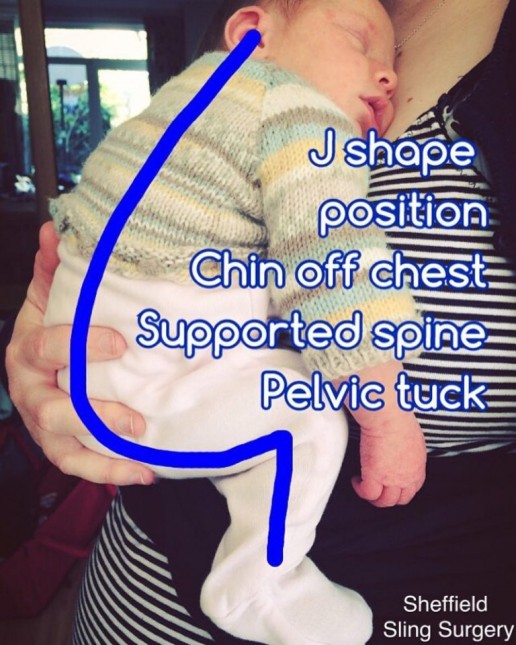
Safe, anatomically correct and comfortable positioning in arms and in a carrier
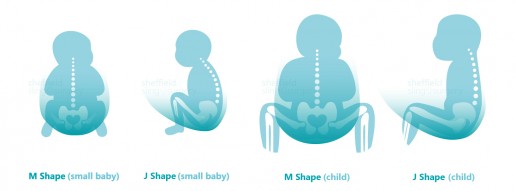
Secondly, choose a sling that is comfortable
Many parents find their high-street carriers can be less comfortable than they hoped, especially as their baby grows, and may stop using a sling at all.
Good slings have been designed to mimic in-arms comfortable carrying as much as possible, and many people find they are able to enjoy long walks with their children, up to pre-school age, with such an ergonomic carrier.
Broad weight distribution across the parent’s body matters; a child who is able to snuggle in and shift their weight closer to their parent’s centre of gravity will feel a lot lighter than one who is held in a stiff pocket, or held lower down and facing out (thus pulling away from the parent).
This applies in front, hip and back carries equally. Positioning makes a great deal of difference to your child’s and your experience of the sling, and is the most important factor in how comfortable it is.
You can make your high street carrier more comfortable in a variety of ways, for example by ensuring your baby is higher up on your chest, held snugly, and using a scarf to redistribute the weight. Your baby should be held snugly enough not to swing free when you lean forwards.
Features like the type of shoulder strap (wide or narrow, those that cross over on the back versus those that are more like rucksack straps), the shape and sturdiness of the waistband, and the type of fabric used can also make a considerable difference. It is always worth trying before you buy, and there are many sling libraries around the country that can help you do this. The Sling Pages has a full list for you to check your local resources.
"Scarf hack" for narrow based carriers
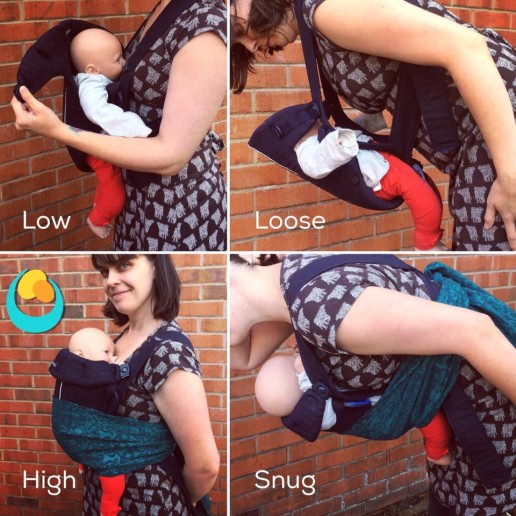
Thirdly, think about what kind of sling may suit you and your family best
Stretchy Wrap
If you have a newborn or a baby under six months, most people will start with a stretchy wrap. This is usually a long piece of jersey style elastic fabric that is between 4 and 5 metres long, and can be wrapped around your body to create a snug pocket your baby can nestle into. Depending on the quality of the fabric, the stretchy wrap is usually used up to six months. It is often worth investing a little more for higher quality.
One size (usually) fits all, and it can be tied on and left on all day for convenience, popping baby in and out with ease without needing to take the sling off each time, many parents don’t realise this. It is possible to use the stretchy wrap as a breastfeeding aid, with care and attention to baby’s airway.
You can read more about stretchy wraps here, including how to use it well.
Close Caboo Carrier
This is a slightly more structured and less stretchy variant of a stretchy wrap, with a little less flexibility. It is put on, adjusted carefully, and then baby is popped into each of the cross passes on the front. The fabric can be tightened through the rings to achieve a snug fit. The Close Carrier can be used as a breastfeeding aid if required, with care and attention to baby’s airway, and most people will find it supportive up to three to four months.
Ring Slings
This is a piece of woven fabric which has one end sewn securely into two strong rings. They are worn cuppring one shoulder with the child sitting in a pouch on the opposite side of the parent’s body, with the loose end of the fabric threaded through the rings in such a way that the tension holds the fabric firmly and the weight is distributed across the shoulder and back.
They have the advantage of being lightweight and (once the knack is gained), quick to put on and take off. They can be very useful for those who need to be able to carry their child on the hip, or need something that offers the child a good viewpoint in all directions.
Ring slings made of woven fabric and with no padded rails are usually the best option, and shoulder style (pleated or gathered) is a very personal choice. They can be used from birth to toddlerhood, and it can be easy to breastfeed in a ring sling, with the appropriate attention paid to airway and positioning.
Hip carriers
Pouches are another kind of hip carrier which can be very simple, but need to be fitted to size; they can be a risk for babies under 3months if used badly.
The Scootababy is a buckled hip carrier with a waistband which can be used from approximately four months and up into toddlerhood.
Carrying aids and hip seats can make hip carrying easier but are not hands-free.
You can read more about ring slings and hip carriers here and your local sling library will be able to help too.
Woven Wraps
Woven wraps are excellent choices if you want great comfort and longevity. They can be used from birth to toddlerhood and beyond. Woven wraps are long parallelogram shaped pieces of fabric, anything from 2 to 7m long.
They are woven in a particular way to provide gentle all-around pressure, supportive but still soft and mouldable. Most woven wraps are made of cotton, some may contain other fibres such as linen or hemp, for extra support, and come in many different colours and designs.
Many women around the world use local woven cloths for many purposes as well as for child-carrying. These cloths and woven wraps feel very different from the fabrics you might find in a haberdashery shop; these are more likely to fray and tear.
Many people begin with a 4.6m wrap (known as a size 6) and learn a carry known as the Front Wrap Cross Carry. They can take a little practice but they allow a great degree of adjustability and weight distribution around the body. There are numerous ways to tie the same wrap, so they can be used on the front, hip or back at the appropriate ages. Your local sling and carrier consultant or sling library will be able to get you started!
Upright breastfeeding is possible, if done safely with the appropriate attention paid to airway protection.
You can read more about woven wraps here.
Meh Dai/Bei Dai (formerly known as Mei Tai) Carriers and variants (half buckles, onbuhimos, etc)
These are Asian inspired carriers made of soft fabric, and are popular with those who appreciate the mouldability and support of woven wraps but need something with more structure, or speed of use.
They consist of a fabric panel that has two straps at the base which are tied or buckled securely around the waist, and two straps from the top of the panel which can be wrapped around the parent and baby to ensure a snug and comfortable fit. Baby sits in the pouch created by the panel, and the long straps allow a great degree of adjustability to all shapes and sizes. They can be worn on the front, hip and back at the appropriate ages, and upright breastfeeding is often possible, if done safely with the relevant attention paid to airway protection.
Your local sling library should have a few of these to try out.
You can read more about meh dais and their variants here.
Full Buckle Carriers
If you’re not sure about tying fabric, a good option is a full buckle carrier, which has a buckle on the waistband, and the shoulder straps buckle into the panel at the sides. Baby is seated facing the parent, inside a supportive pouch that supports them widely across the base from one knee to the other.
Waistband types vary, from the minimal to the heavily padded, and people’s preferences vary enormously. Some shoulder straps cross over on the back when baby is on the front, others are fixed into a rucksack style. The shape of adult and baby together is very individual, as is the health of the adult’s back, so what suits one pairing will not suit another. More padding does not automatically mean “better” or more comfortable, and those with back pain will not always need heavily structured slings. Good posture and general back health are important – read more about this here.
Buckle carriers can be very quick and simple to use. Often, a little practice to get the straps and positioning optimally adjusted is well worth it. Most good full buckles fit well from three months upwards; some can be adapted for younger babies by rolling the panel or by using inserts to keep baby snug, high up and visible. Many carriers will last into early toddlerhood, and some beyond that, depending on design.
Many mums find that breastfeeding in the buckle carrier is possible, if done safely with the relevant attention paid to airway protection. Most can be used on the back once babies have grown.
Some buckle carriers will allow baby to face the world. This can be great, when done safely and responsively. It is recommended only from four months upwards, not for sleeping in to protect the airway, and only for short periods of time. This is due to the reduced opportunity baby has to see and interact with his parent and learn about the world based on his parent’s response to it – this is known as social referencing. There is also reduced hip and leg support from the narrow base which can be an issue in some circumstances, as well as less comfortable for child and parent. Carriers that provide hip healthy positions facing out are generally preferred. (read more about facing out here.)
You can read more about buckle carriers here.
Fifthly, enjoy your sling and let the world see it!
Why not share your enjoyment with the parents you meet so they can discover slings too? We all carry our babies, some in arms, some in high street carriers, some in wraps, some in ring slings, some in meh dais, some in buckles. We all learn from each other; encouragement is always more productive than criticism!
Here is a lovely article from Ellie at Peekaboo Slings about the importance of no judgment; “We want to normalise babywearing and promote carrying your children close – put bluntly, we don’t care about the rest”.
Fourthly, be aware of the changing needs of your baby
The weather conditions may change how you carry your baby; being aware of the heat and the sun, or the cold and the rain may affect your choice of sling and your clothing.
As your baby grows, her own needs will change. She may want to sleep less and look around more. She may prefer hip carries, or even back carries, so she can see into the world into which she is being carried. As she gets heavier, the carrier you began with may begin to feel less supportive for you and for her; for many this marks a move towards “toddler-worthy” carriers. This may be different ways of tying your woven wrap, learning how to adjust the straps on your meh dai to ensure knee to knee support, or moving up to a bigger, toddler-sized (or even preschooler!) carrier when you need to. Your “baby” sized carrier will often last a lot longer than you think.
You will not spoil your baby or make him clingy by carrying him as he grows. Big kids need cuddles too – loving contact is vital to our emotional health and security, from cradle to grave. You can read more about carrying older children here, and your local sling library or consultant should be able to help you make the most of your carrier.
How to Choose a Sling
I have met thousands of parents over the years, wanting help with choosing a sling. It’s fantastic to support them in their desire to carry their child close, with all the great things this will bring the whole family. For many, they can feel utterly overwhelmed by the huge range of options on offer (see here for a quick introduction to carrying, and here for a quick overview of the major types of sling).
Very often, they will ask me what I would recommend.. and this is a very hard question to answer, one that I usually respond to with more questions! Everyone’s choice of carrier is unique for themselves; and their initial choice will often change as they try things out.
Initially, when it comes to choosing a sling,
many people will look for a carrier that isn’t especially expensive, to see “if they get on with carrying.” Others will pick something that has been marketed by a mass-manufacturer in mainstream stores or at trade shows as being the best option available or will have picked something recommended on social media (please be aware of the fact that many of these influencers have no idea how to use a carrier well or safely), or will choose something for the specific features listed, such as the ability to carry a baby in multiple positions, or being described as “the best”. Some may have been given carriers by their friends from several years ago (often hardly used “as it just didn’t work for us”), or bagged some ultra-cheap ones on Ebay/Vinted.
This can sometimes lead to problems, as such carriers may not have been specifically designed to work with parent and child anatomy and can thus often be uncomfortable after only a short time. They may be worn too loose or baby may be too low, causing back pain from the strain of the carrying or the hunching that can ensue (as well as potentially posing an airway risk – also see here for more about carriers being too big). This can lead to a belief that that baby is too heavy or that the parent isn’t strong enough (neither is usually true!) and carrying journeys come to a premature end. At this point, those who want to make carrying work for them will often look for support from someone like me to find something that works. Of course, some parents will come straight to us right at the start!
A good carrier should be comfortable for both baby and parent. It should support baby safely, protecting their airway and allowing easy breathing, in just the same way as when you hold them upright on your chest in your arms.
A good carrier should hold baby in the anatomically appropriate spread-squat position that respects infant and child spine physiology, and it should be snug against parent/caregivers chest for weight distribution. Carrying in this fashion is safe, and is usually much more comfortable and allows longer duration of sling use than in-arms or in a poorly fitting carrier. (Do remember to build up your carrying muscles day by day. It is exercise and gets easier with repetition, just like training for a race.)
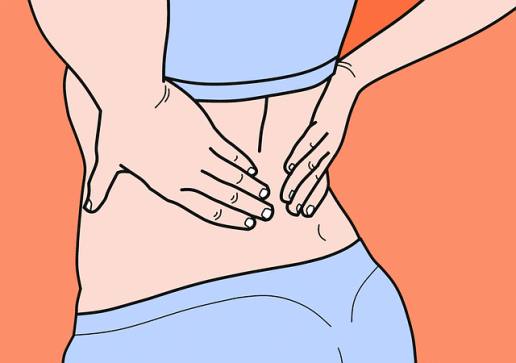


People end up choosing their main carrier for many different reasons – and each individual will have different priorities, which will lead to their own personal choice. When I am asked what I would recommend myself, I often describe a bar chart like the one below, which shows just how variable things can be, and what suits me won’t suit them. Some people will prioritise comfort and longevity over pricing and simplicity; some value customisability and appearance more than pricing or resale value, everyone is different. People may end up choosing alternative carriers that they had originally envisaged, based on their “list of requirements”, due to how the sling feels for baby and parent when it is fitted.
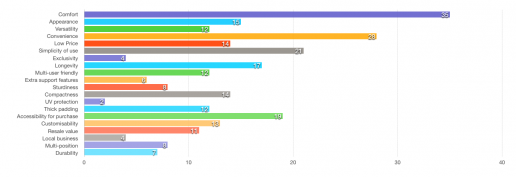
This is why one “size does not fit all” and why many of us in the sling world use an analogy of shoe fitting, jeans or wedding dresses when it comes to trying a carrier. Everyone ends up with something difference. Cheap shoes bought over the internet often don’t fit your feet and can cause blisters. Jimmy Choos, Louboutins or Doc Martens really do not work for everyone, however desirable or pretty or cool they may be. What works for your friend, or for a large number of enthusiastic sling owners on the internet, or an experienced sling professional may not work for you. Current trends or famous brands don’t equate to an instant “perfect fit” and no one carrier can claim to be “the ultimate” or “the best.”
Trying a few things out before you commit yourself to a purchase that can feel expensive is very useful, and it is often worth spending more on a good quality carrier that fits you well, to ensure you and your baby are both comfortable and that it will last for some time. Many people find, however, once they have the right sling, it gets used daily, and the cost per use per day comes down to pence. Don’t be tempted to buy an extremely cheap carrier that may well be a fake (Ergobaby is the best known carrier to have been counterfeited) – always ask for proof of purchase from an authorised retailer when buying second hand. Your child’s safety isn’t worth the risk. Buyer beware!
Once you’ve recognised the benefits of carrying as comfortably as possible, how do you begin to choose?
I highly recommend visiting your local sling library to try out several options; there will be someone there with training and experience to help you navigate the choices. Some people will have a “shopping list” of requirements for their ideal carrier, based on what they have read online or been advocated by a friend or an internet group. Of course, such recommendations can be helpful, but a one-size-fits-all approach rarely works in practice. Every baby-parent dyad is unique, with their own personal stories that influence how they stand, how they carry, how they prefer to be held, for example, and particular features that seemed desirable on paper may not feel quite right in person. If you think your other half is likely to carry too, do bring them along to try things themselves; it is very hard to guess what will work.
For example, some people will love the feel of thicker, more padded waistbands, while others will find them bulky and restrictive. Some will prefer straps that cross over, others find this can ride up to the neck. Some find rucksack style straps hard to do up. Some inserts are simple to use, others more complex, many don’t like inserts at all. Some people find meh dais and woven wraps more comfortable than carriers. It is generally a good idea to have an open mind; you may be surprised to find some things work much better than you had imagined, while others just don’t feel quite right.
Bulky carriers may not necessarily equal greater support or comfort for everyone, and too much bulk can be unhelpful for some. Knowing how to achieve good positioning and how high and tight to have a carrier are very effective tools for successfully distributing weight comfortably.
A good sling librarian or peer supporter will be able to show you how to position your child, as well as tips and tricks that can make things much easier (such as how to put on fiddly straps, or how to make sure your stretchy wrap is tight enough, or how to ensure your ring sling feels secure). Sling libraries are fantastic resources.
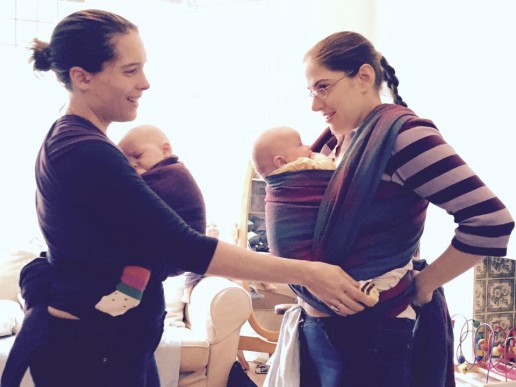
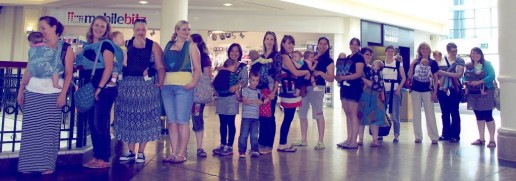
It is worth being aware that knowledge about sling safety and best practice positioning is improving all the time. Older carriers and older brands may have instructions that are no longer part of current safety guidelines; social media is often marketing focused and wildly inaccurate, feeding and sleeping positions in slings are often out of date. Do check with your local sling professional if you have any concerns at all, they will be only too pleased to support you and your child.
Your sling should bring you and your child great enjoyment and should not cause you pain or be uncomfortable. Furthermore, as a family’s familiarity with slings grows and as their baby gets bigger, their choices can change. They may move from things that are especially designed for small babies, or carriers that are as simple as can be, on to things that they find increasingly versatile and comfortable. Babies may wish to change how they are carried, desiring greater visibility, for example. Each parent may have different shapes too, and families may decide to have different carriers for different situations (eg a simple buckled carrier for use on a school run or on a muddy day, or a woven wrap for a long sleep-inducing walk, for example). There are no “perfect” answers, but options that end up being the best choice for the circumstances.
Sling Safety Matters - How to Use a Sling Safely
Sling safety matters. Carrying our children in a sling safely can be one of the most precious experiences we ever have as parents or caregivers. There really is something very special about the bond that builds from keeping your child close.
However fantastic it may be, it must be done safely, for your baby’s health and your own. As parents of small babies and bigger ones, one of our greatest priorities is to keep our children safe. A good, correctly fitting sling can be a very helpful tool for this; keeping a child safe while daily life continues.
Four key areas to watch – see more detail of this image at the link here
Sling use for very young babies (birth to four months)
This is becoming increasingly popular around the more developed world; a practice that has in fact been universal for thousands of years. Families that live in extended communities or “villages” are usually able to share well-honed, tried and tested knowledge down the generations and provide easily accessible advice and support. This kind of local support is much harder to come by in our more fragmented societies, which means we often turn to books or the internet to fill the gaps in our knowledge and provide us with reassurance we are doing it right. Unfortunately, sometimes these sources of information are out-of-date, incorrect or even dangerous, and can lead to problems with the use of any kind of baby equipment. Manufacturer instructions can be slow to be updated with new “best-practice” guidelines and YouTube videos not made by professionals can often be misleading and miss out important information.
Many carriers on the market hold babies very low down and loose, which will allow young bodies with little muscle tone (especially during sleep) to slump and end up with nose and mouth pressed against fabric. This is an airway risk. They often talk about “head support” but use rigid high backed panels that tip baby’s large head and chin forwards onto their chest. This is not wise or responsible. Read more here.

Why bother with a sling at all if there are any risks?
There are many benefits to using a sling with a very young baby; in fact. many hospitals use them in the practice known as “Kangaroo Care”, and there is much evidence to suggest this skin to skin contact between mother and newborn (especially premature babies) can confer great benefits to both.
The baby gains assistance with their physiological regulation of breathing and heart rates, temperature control is improved, and the contact helps to establish breastfeeding and promote more rapid growth compared to babies who are not held as close for as long. Furthermore, the baby will feel more secure in their developing relationship with his caregiver, due to the time spent in close contact.
The caregiver may find that he/she is able to bond with her baby, due to the increased release of oxytocin, and post-natal depression may be reduced. Being able to be “hands-free” can really make a difference to a family’s ability to get around with their new baby, keeping them active and engaging with normal life.
The key is to know how to use the sling in a safe and secure way, just as you may practise learning to ride a bicycle, or drive a car. Familiarity and practice make perfect. All baby equipment should be used safely, and it is an unfortunate fact that sometimes things are not fit for purpose, or the instructions that come with equipment are inadequate. Babies should be able to breathe easily, be at a comfortable temperature, and held in positions that are healthy and beneficial for them.
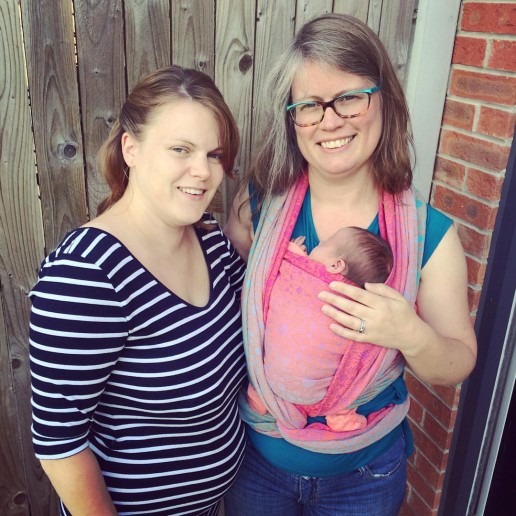
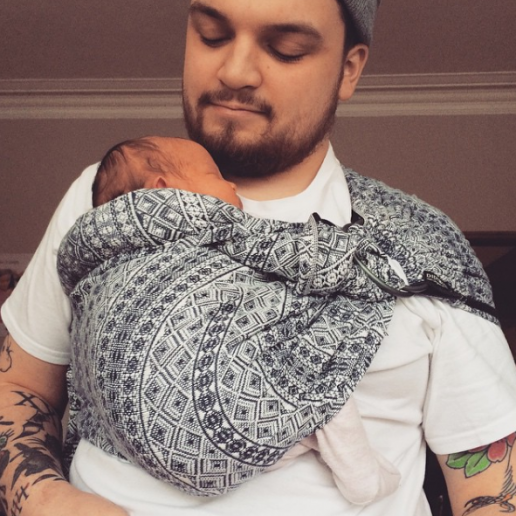
How can I ensure I am using my sling safely?
A good sling should mimic the natural, in-arms upright position for carrying babies, ensuring the caregiver can see and sense the baby at all times, and thus able to be quickly aware of and rapidly responsive to any changes.
I see a lot of parents with newborn babies wanting to learn how to use a sling, and the photos and the position diagrams here are the first thing we look at.
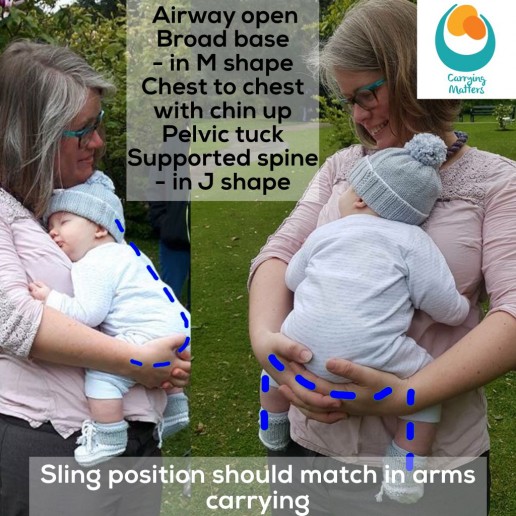
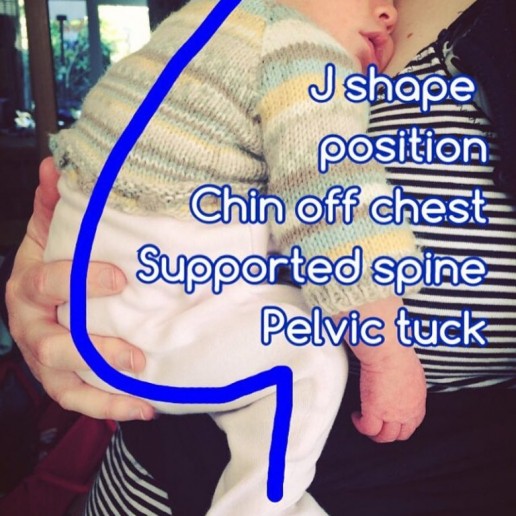
Babies grow in tucked positions, and after birth, they tend to maintain this gentle curve to their spines for several months due their lack of muscle tone or strength to their head and neck and upper torso. It is not till they are older that they have the strength to hold their spine in a straightened posture. It is not till they can crawl and stand and are beginning to walk that their muscles and ligaments hold the spine in the more adult S shape. While babies are young, holding them in their naturally adopted tucked positions is both comfortable for them and also more comfortable for you. If their backs are well supported, their heads do not need rigid support, do not be tempted to raise head rests or sink babies down inside panels. Babies will rapidly develop head control – here is some guidance about managing a “floppy head” without compromising airway. As they grow and begin to develop their strength and clinging ability, their needs will change.
Young babies who are seated in the “squat” position or the M shape (looks like a J shape from the side) will have a broader, more stable base to rest on than a narrow perch. This position, with the curve mainly at the base also helps to keep the chest flat against the parent’s body and thus in an expanded position for good airflow.
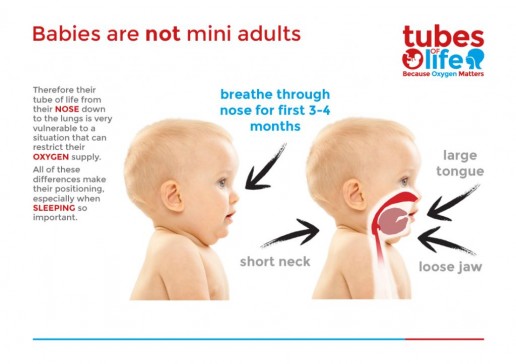
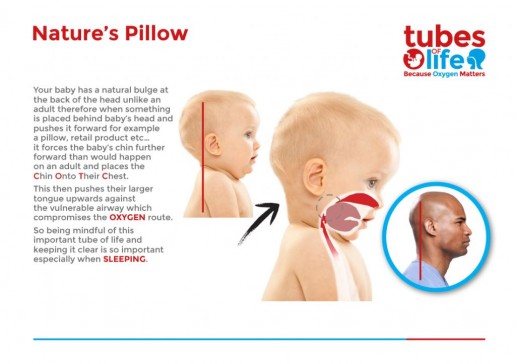
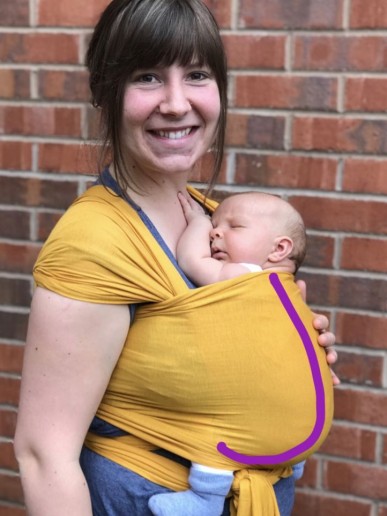
Babies under 3 to 4 months are most at risk of airway compromise when chin can sink onto their chests; so a good carrier will hold baby’s chest snugly against yours to keep the chest cavity uncurled and the chin off the chest. It is important to ensure no slumping and that there is no fabric over the face and there is a good air supply. Babies have a disproportionately large occiput (the back of the skull) and a short neck, along with lower muscle strength and co-ordination compared to adults. Rigid surfaces behind the back of their heads tend to push the skull forwards so chin sinks onto chest and can obstruct airway. This is is why upper back and neck support (no further up than the earlobes) is so important, rather than using headrests which can be risky.
Stabilising a child’s body with a broad base and good upper back and neck support is key in the early months.
This also applies to car seat usage; rigid shells with a hard back holding babies at 40 degree angles can also push a baby’s chin onto their chest and is why it is not recommended for newborns to sleep for long periods in car seats.
Babies should be dressed appropriately to ensure they do not get too warm; people are often surprised how quickly everyone can warm up when in close contact. Please do not use thick, furry or padded snowsuits and dress down. You can always add more layers over the top.
Respectful, anatomically appropriate positioning
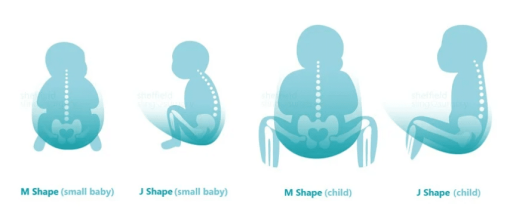
ABC is the basic first-aid mnemonic, which can be adapted for safe sling use.
AIRWAY is vital. Babies’ heads are heavy and it takes time for their muscle strength and tone to develop enough to hold up their heads and support their own airways; until then, it is our job as parents to be as caring and careful as we can. A baby’s head should be resting against the caregiver’s chest, with the windpipe straight, not curled over. A good guide is at least two fingers being able to fit between baby’s chin and his chest. Air should be able to circulate freely and the face should not be obscured by fabric, or buried within cleavage. Baby’s cheek can rest against parent’s chest, and hands should be accessible to the mouth for sucking if needed (and not trapped down the side of the sling)
BODY POSITION is important to protect the airway as well. The upper body should be supported against parent’s chest, to ensure no slumping (this is why carriers should be tight, to make sure that babies do not roll up into a ball). The pelvic tuck into the M shape with knees higher than bottom will help support baby’s back as well as being very comfortable. The neck should be supported where possible to avoid backwards lolling but the back of the head should never be tilted forwards (see the image above – babies have a larger occiput, shorter neck and less-strong neck muscles than adults). The pelvic tilt and using a rolled muslin cushion (to rest below the earlobes) can be helpful if babies resist head support. See the diagrams above for the correct shaping.
COMFORT comes last – I would rather see a child in an uncomfortable carrier that was safe, than fast asleep slumped into a tight ball or folded over in a cradle carry, however comfortable it is. However, you and your child are likely to enjoy and appreciate a carrier that is pleasant to use, fits well and does not cause back pain. Here is some advice about how to choose a carrier. Comfort also covers the baby’s temperature; too hot is a problem, so please layer your baby carefully and do not over-dress them.
In summary, the safest position is an upright one that meets the TICKS guidelines – Tight, In View, Close enough to Kiss, Keep Chin off the Chest, Supported Back.
I would never recommend any kind of lying- down position in a carrier, especially where the back of the head is bent forwards to compress the airway and a child is thus not able move its head freely to clear any blockage. Bag slings, ill-fitting pouch slings and other slings used badly can be risky.
Breastfeeding is usually safest done in upright positions for this reason, and a child who falls asleep feeding in a sling should always, always be brought back into this safe upright position, to protect the airway. Babies should never be left to sleep in a cradled position inside a sling; this can be dangerous.
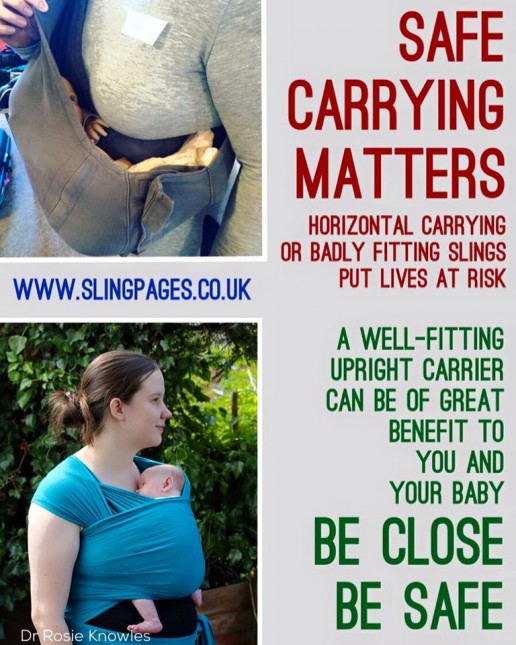
What about older babies beyond the early weeks and months when they are developing more control over their bodies?
As babies grow, their needs and abilities change. A baby who can maintain their own airway independently will expect more freedom and will show you this with wriggling and turning. Their wild jerky movements are how they practice muscle control and learn coordination. Movement is important, babies should be given the opportunity to explore their bodies whenever possible. Parents and carers will need to find a happy balance between the need for safe and comfortable transportation, a place to sleep or feed, and their baby’s need to move. It’s worth being aware that prolonged, unchanged positioning isn’t good for anyone and even adults are being encouraged to move every 45 minutes. Children’s bodies are still growing!
Try to change positions, try in arms carrying, swap with other carers, use a buggy, to give children a variety of experiences and positions.
Top Tips
Position matters
- Your child must be able to breathe safely in the sling. Their chin should not be touching their chest (a good guide is a space two finger-widths or more) or lolling back too far. (Try it yourself! Can you swallow your saliva with your chin too close to your chest or lolling all the way back?)
- To ensure no slumping, position your child correctly against your body, chest well against yours, and bring the carrier over your baby as you hold them. This video will help you to ensure no slump.
- A child whose bottom and legs are well supported from knee to knee in a “spread squat” or “M position” is in a more stable position and will be less likely to fold up or slump over.
Know your sling and know your baby
- Always familiarise yourself with your carrier before you use it for the first time. Ensure you have a good idea how to use it. Some people like to practice with a teddy bear near a bed and with a mirror to see what is happening.
- Always check your carrier before use for any wear and tear, that all component parts are present and fit for purpose (eg is the chest belt in place? Are any buckles in the right places and not broken, are the seams are intact?)
- Check your baby is willing to be carried. The only “unsafe” carry is one with an unwilling baby. If baby seems unkeen, can you establish why? For example, is he hungry? Is she wet or dirty? Does he have reflux or does he find certain positions uncomfortable? Does she want to do something else? Is he too hot or cold? Is she in pain? If he or she cries in a sling, read here about some of the many other reasons a baby may express distress.
Dress appropriately
- Ensure appropriate clothing – the sling may add additional warmth, so layering is a good idea.
- In cold weather there is a temptation to wrap up extra warm but this needs to be done with care. Too-warm babies are less likely to wake if their breathing slows. Don't be tempted to over-dress!! You can always add more layers over the top if babies really are cold.
- Many people find baby leggings, gloves on strings, well fitting hats and tie-on warm booties to be especially helpful in the chill. Thin layering is key.
- Read more about the risks of snowsuits here.
- Don’t forget to ensure your baby doesn’t get too hot in the summer; protect your baby from sunburn and to keep well hydrated in warm weather.
- An useful tip, if you dress your baby in a bodysuit with feet, is to choose a larger size than for ordinary wear, as the fabric will ride up a little with the sling and may squash tiny toes.
Be alert at all times
- It is important to be aware of your child at all times; if you feel something is different, check! Some people like to carry a small pocket mirror so they can check on children riding on the back.
- It is wise to consider what physical activity you wish to do while babywearing; will it hinder your awareness of your child in the sling or hamper your ability to deal with any problems? Your baby will be at a height in the sling and may be able to reach for unexpected items – awareness and attention is vital.
- Be very cautious when engaging in any form of exercise or dance with your baby in the carrier; many manufacturers do not recommend this, and there are risks with young babies and untrained class leaders. Read more about slings and exercise here.
- Your sling is NOT a substitute for a car seat, and you should not sleep while carrying your baby.
- Do not carry your baby facing out in a carrier before 3-4months, and avoid letting them sleep facing out. Be responsive to their needs and turn them back to face you when showing signs of weariness. Choose a carrier that will be comfortable for their spines.
Get help and support
There are many, many sling communities in the UK, sling consultants like myself who offer one to one sessions where you can look through the options and practice using a carrier safely, sling libraries with trained peer supporters where you can try out slings and get some advice, and sociable sling meets that will serve a “village” purpose for parents to share their growing knowledge/personal journeys and offer support. Don’t rely on books/pamphlets/the internet – be armed with education and take advantage of the experience you will find in your local resources.
If you are unsure, do find your local sling professional at the Sling Pages – we are always happy to help.
The Fuss about Facing Out

What are the advantages of world-facing?
Babies do enjoy seeing the world, especially once they are a little older and have mastered head control and wish to be more involved with their environment, rather than sleeping or snuggling in as they did when they were very little. Curiosity often coincides with increased motor co-ordination and greater periods of awake and interaction time. This is often the point at which families begin holding their babies in positions that give them greater visibility. Instinctively, they tend to support their little ones in very gentle positions that still ensure good hip and spine support; cradled in arms with chin off chest, or held in semi-seated positions with back curved against parent but hips held in flexion, as if sitting in a bowl.
These positions protect the natural anatomical curve of the immature spine and do not straighten it uncomfortably.
As babies grow, their muscle strength increases and fatiguability decreases, alongside greater coordination and gross motor skills. This allows slowly improving head and neck and upper back control (with less drooping or wild flailing) as their spines gradually begin to uncurl. Furthermore, as their focal length improves and visual acuity rises, the world becomes very interesting! There are stages in baby development when babies seem to arch away in arms a lot; this may be related to a desire to see more, but may also simply be attempts to hone upper back strength, in preparation for turning skills and rolling over. This is very common around ten to twelve weeks. Babies may also arch when they are tired, if they have reflux, if they are frustrated.
In-arms holding is responsive, which is the key issue; if baby makes a protesting movement or noise, the carer responds and moves the baby to help it to become calm again. Also, parental arms get tired and baby is easily moved to another position, this may often be on the shoulder facing parent again for a while. Such reactive carrying in-arms, with changing facing-in and facing-out positions, is of great benefit for honing development and also to encourage learning about the world from a safe and comfortable position.
This all sounds great, so what’s the problem with using a sling for this?
What are the hazards of facing out?
It is important to remember that young babies are not ready for prolonged and intense interaction with a very sensory-overloading environment; they have not yet learned how to process the bombardment of information their brains are receiving. They have not yet discovered how to “filter out” the irrelevant for a more focused look at the world, (a skill that we take for granted) so this can be very tiring. Being able to turn away from the noise and bustle and fall asleep (to process information) is important. Babies should NOT sleep facing out.
A facing-out carrier holds a baby in a fixed position for a prolonged period of time. The duration of this time is entirely dependent on the parent; they are unable to see their baby’s face to pick up early cues of tiredness or distress or breathing difficulties, and they are less able to feel subtle shifts in baby’s body signalling discomfort or a need to change positions. Babies can easily be left in carriers for much longer than they would be held in arms.
Babies are intensely social creatures and learn to regulate and control their emotions from interaction with their parents and watching their faces. Social referencing (also known as triangulation) is very important in the first year and well into the second. A child will often decide how to react to a new experience after it has looked to its carer; it will be less likely to touch something dangerous if the carer reacts in an upset way. Potentially scary experiences can defused by turning the head to see a parent remaining calm, or to receive comfort and reassurance, and vice versa. In a structured carrier worn facing out, it isn’t as easy for a baby to twist around to see the parent’s face for reassurance or to be able to seek comfort.
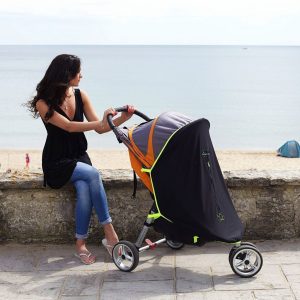
Furthermore, the world-facing positions do not provide any safe sleeping positions (all respected manufacturers say babies must be turned around to sleep; this is often missed in the small print) as there is no head support in this carry. A heavy head that is unsupported by a parent’s chest will droop forwards, putting baby’s chest under slight compression and pressing the chin downwards, potentially compromising the airway.
This is why the majority of respected sling manufacturers suggest that babies under 4months should not be carried facing out. Before this, babies simply are not developmentally ready. Beyond this age, they should not be held in carriers facing the world for longer than twenty minutes to half an hour or so. (Some manufacturers say facing out from 3 months up, some say from 5months up). I think it depends on the child’s personal developmental stage and there should really be no rush.)
There is also the issue of hip and spine positioning in facing out positions. Most facing out in slings is done with “narrow-based” carriers, as very few high street options offer wider, more ergonomic seats that protect the gentle curve of the spine and promote healthy hip development in the world facing position. Most babies find their backs are held in straighter positions than ideal, with their legs hanging straight down from their hip sockets in this narrow shaping. While there is no formal evidence that choosing a narrow-based carrier will cause any harm to a baby who has healthy hips with normal sockets, there is a small percentage of babies who do have developmental hip dysplasia that are missed at their routine checks. These babies will benefit enormously from the ergonomic seated M shape position that allows their joints to be held in the optimum angles for healthy blood vessel growth and nutrient provision, and often this positioning is all that is needed to correct mild cases of hip dysplasia. It is worth weighing up the risks and may be better to choose a carrier that holds a baby more optimally if you decide to face baby out. Additionally, it is more comfortable for a person to be seated on a broad based hammock shaped chair rather than perched astride a narrow padded beam, and babies are no different.
Carrying a baby who is sitting high up against the carer’s body with the centres of gravity closely aligned is much more comfortable than carrying one who is low down, far away, and suspended from the carer’s shoulders. The parent’s body does not form part of the support structure of the carry when facing out, so much of the work of carrying has to be done by the upper body, rather than the core postural muscles. Centres of gravity diverge further when held facing out in narrow based carriers. Put simply, carrying facing out in this style of carrier is often uncomfortable.
Ok, so what can I use to carry my curious child optimally?
It is common among parents who are considering using a sling to look for options that offer world-facing positions. This position is what is often seen in the media and is widely advertised; it may be more pleasing to see happy babies looking directly at the camera rather than away from it, which can be better for marketing purposes. As it is so visible, it becomes the “norm” and carriers that offer this option are often perceived as “better.”
Many parents believe that babies need to be given the opportunity to face the world as much as possible for the stimulation, rather than looking at their parent all the time. Sometimes this belief can be be a marker for low self-esteem in a parent; that they just aren’t interesting enough, when in fact, for many well-attached babies, their parent is their most beloved sight. This is especially true if parent and baby are attuned and the parent is responsive and communicative and able to engage happily in play with their baby. Babies are often able to pick up on unhappy or uneasy feelings in parents and can be reflexively resistant to close contact, creating a negative spiral. Lots of in-arms carrying, skin to skin, and just time spent together can be very helpful with this.
Sometimes babies may begin to resist being carried in their parent-facing positions – they may have come to associate the sling with sleeping which they don’t want to do, and they may want to be able to see more.
To achieve a good view while the child remains parent-facing, and ensure access to the world, try carriers with broadly angled straps that don’t get too close to the face can be very useful, or ones that can be tied carefully for good visibility. As children grow in co-ordination, they need less head support and often enjoy having their arms out of carriers (with the panel reaching up to the armpits for safety and support.) It is surprising how far a child can turn round to see when they can move their shoulders! 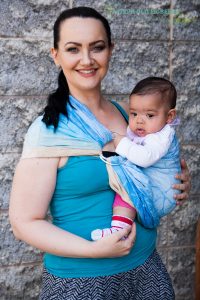
If you have a baby who is developmentally ready for facing out in a carrier and has stable hips, then I think it is just fine to give it a go! Your local sling library will be able to show you some options and talk you through which may be the most comfortable for you. Trying the carrier out first for a period of time at home is very useful to see if it really does work for you before you buy; advice from the internet is no substitute for real life trials.This period of “fussiness” doesn’t usually last long, as babies grow in co-ordination they are happier and many babies who once resisted facing in are very content a few months later in a carrier that is more comfortable with greater longevity.
In summary, facing out can be a great deal of fun for parent and child, if done sensitively and thoughtfully, with consideration to the child’s anatomical development and comfort; look for those carriers that take your baby’s comfort as seriously as yours. Try to pick a carrier that will hold baby optimally for most of the time, some come with specially designed bucket seats and others will widen for facing in and back carrying.
Age-appropriate facing out for those who enjoy it is great, when done safely! Your local sling library can be found at www.slingpages.co.uk.
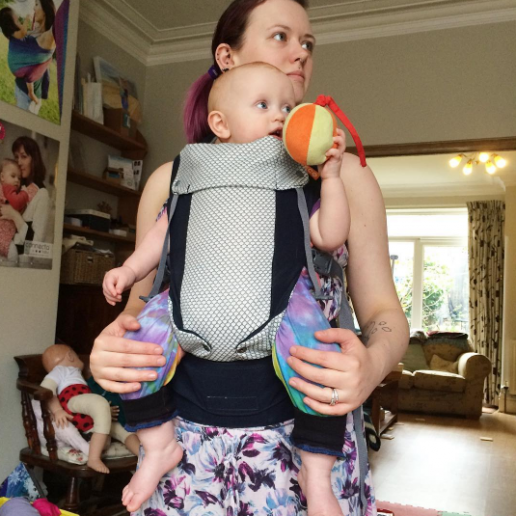
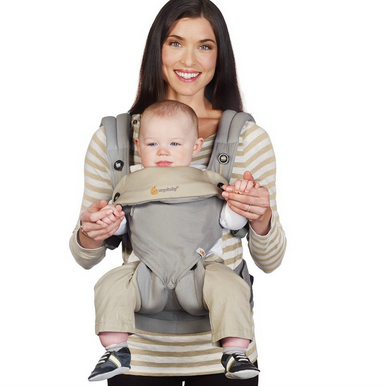
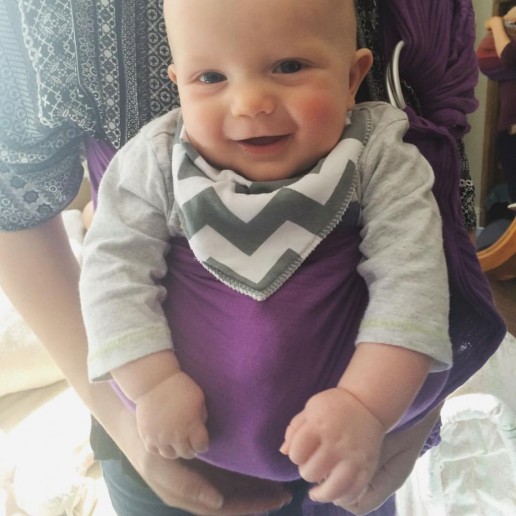
Carrying while Pregnant
Is carrying while pregnant safe? Many mothers wonder if they can safely continue to carry their children while pregnant with a new baby. For many, having established a close bond and finding the carrier they use of great value for comfort and practicality, they are keen to carry on carrying, both to meet their child’s needs for contact and for their own enjoyment.
“I knew that I needed to make the most of carrying my girl before her sibling was born as things were about to change for all of us. She needed me too, so I carried her as long as I could during my pregnancy. Her weight balanced out my bump and actually made my back pain more manageable by being corrective.” Jody
Other mothers may not have a choice, especially if there will be a small age gap between siblings and the older child is not yet walking reliably, or if he becomes worried by the impending changes to the family structure and needs extra closeness and reassurance. Sometimes it is just necessary.
“My little girl is very strong willed so if she wanted up for a carry while I was pregnant, it was simply the path of least resistance . There were a few times when she was poorly, others when she was tired or I simply had things to do. It was all about practicality and doing whatever made my day a bit easier.” Lindsay
It is worth reflecting on the fact that women around the world have, for many generations past, carried older children on their bodies while pregnant, so it is certainly possible to do. In societies where babywearing is a part of everyday life, child-carrying is traditionally shared around large families, with older siblings carrying younger ones, or close family members taking their turn, to lighten and distribute the load around the community. Women in more Westernised societies may feel much more isolated and unsupported by their local communities, so they may need to be able to carry their own children for longer periods and more often than in traditional societies.
Babywearing in pregnancy is indeed possible for the majority of women, if they are in good health and there is no medical reason to avoid lifting loads. Those who are already well used to carrying their toddler frequently will find it simple to continue; their body strength and tolerance has grown in pace with their child’s weight and little may need to change until the bump is large.
“We needed to walk the dog and I wanted to be able to go to the dog trials and carrying was much more convenient than a buggy. My body was used to carrying, so we just carried on!” Lucy
Those who are new to carrying (and looking for a solution for an uncertain or distressed older child) may find it more of a challenge, just as if they had a new job which required sudden frequent heavy lifting. In these circumstances, it would be wise to get some support from your local sling professionals to find out which slings will work best for you and be comfortable. They can help you learn how to get your bigger child up into a carrier safely without straining yourself, and be able to work with you to find solutions. Once equipped with an appropriate sling, it is wise to stick with carrying for short periods and gradually increase the duration of use. This all helps to build up endurance until pregnancy is well advanced.
First Trimester
The maternal body undergoes several changes during pregnancy which can have an impact on the type of carrying women find comfortable.
In the first trimester, symptoms such as 
All being well, however, most carriers can be used in early pregnancy; there is no need to fear that the growing baby will be squashed by waistbands, for example. On the whole, the carrier that has been used up until a mother discovered she was expecting again can continue to be used while baby’s body is still small and mostly contained within the pelvic brim. Front carries are still fine to use and hip and back carries are also appropriate.
This may be a good time to begin learning some new carries or investigating other slings in preparation for an enlarging bump. At this early stage, the toddler’s weight is still being distributed around the mother’s body and it is not resting on a bump, so there is time for both parties to begin initiating change whilst still being able to enjoy front carries.
If there is any discomfort from abdominal pressure, altering the type of carry can be very useful; front carries that don’t use a waistband could be considered, as could hip carries or back carries that avoid any central abdominal pressure. Meh Dais (and their variants) and woven wraps will offer high back carries in this circumstance, and can be tied in ways that have no knots around the middle at all (for example, “tying tibetan or candy cane”). A carrier with a waistband could be moved low down to settle around the hips (as long as the carried child remains snug and close enough to kiss with an uncompromised airway), or moved higher up nearer the ribs, whichever feels most comfortable.
Second Trimester
As a growing bump begins to have an impact on a mother’s shape, moving to hip or back carries may feel much more comfortable. Front carrying may become awkward as the child will be very high and it is best to avoid a heavy toddler’s weight sitting on top of a bump.
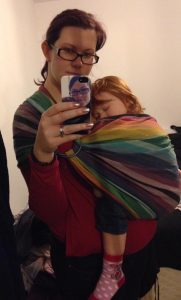
Those who love ring slings and other hip carriers have often already learned how to minimise these alignment issues with familiarity and experience, and can always benefit from being reminded!
It is worth being aware that prolonged hip carrying in pregnancy may also have an impact on the pelvis and its stability, especially as ligaments begin to soften and loosen in preparation for birth. If you begin to experience any discomfort with carrying (if not related to inexperience) then it is sensible to check your posture to make sure your spine is not twisting, try frequent switching of sides, reduce the duration of carrying, and see your local specialist for support. Some women suffer from Symphysis Pubis Dysfunction and may find hip carrying inadvisable.

Logistically, waistbands may begin to become difficult to fit above the bump and may no longer be as supportive due to the changing angle of the band and how it functions when distributing weight around the pelvis. It is up to the individual to decide when the waistband is no longer the best option. At this stage, carriers with floppy soft waistbands that will mould around the mother’s shape, or no waistband at all, may be more useful. Meh Dais with flexible waists that can be carefully tied, or podaegis or onbuhimos or woven wraps tied in such a way that the carry has no waist at all may be very helpful.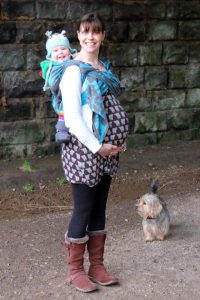
Learning how to do this well and comfortably may need practice and building-up of strength due to the new position and a local sling professional can help.
 Third Trimester
Third Trimester
In this last part of pregnancy, the maternal body is now carrying a significant extra load every day; movement may feel more cumbersome and the mother may wish not to carry any more than she has to. Furthermore, the levels of relaxin hormone increase significantly; ligaments and tendons soften and become more elastic. This helps the pelvic outlet to widen ready for delivery and also loosens and softens the intercostal muscles and ligaments between the ribs to allow expansion of the chest diameter for the growing baby. These changes will all affect load-bearing and every pregnant mother will vary in what she feels able to do; each successive pregnancy will also affect carrying ability.
In the third trimester, high, supportive back carries with soft slings tend to work best; woven wraps in multiple layer carries or supportive single layers are useful, as are meh dais and their variants, as well as the waistband less onbuhimos, all of which keep toddler weight high, snug and central, minimising any uneven pressure on the pelvis and spine, and also balancing out the weight of the bump. Carrying may be only for short periods, and hip carries are best kept to a minimum.
Once baby has been born, the maternal body will take some time to recover from the huge changes of preparing for labour; and then the process of labour and birth themselves. It may be some time before a mother feels well and strong enough to begin carrying her toddler again; the pelvic floor and stretched abdominal muscles need time to re-tone and strengthen. For this reason, many experienced professionals will advise post-partum women to consider carrying just their newborn for the first few weeks and months, and then begin to carry their toddler again in front carries before they consider re-starting back carrying. Methods for getting a heavy toddler on the back will need to be considered; swinging and scooting methods may place inappropriate strain on still-recovering ligaments and muscles. This will of course depend on individual circumstances; back carrying may be preferable to pushing heavy buggies. Tandem carries may be necessary from an early stage, and it would be wise to visit your local sling professional to get some support with carrying two children in this way if you are not experienced.
Carrying in the Postnatal Period
Is carrying in the postnatal period (in the early weeks after a baby is born) safe?
Babies want to be held close from the very moment they enter the outside world; they crave contact and many will spend their first few days and weeks sleeping in their parents’ arms and feeding frequently, enjoying this close interaction.
Pregnancy can be tiring and uncomfortable for many, due to our changing bodies and habits. We are no longer an upright species but a sedentary one, to our great anatomical and physiological disadvantages; chronic pain is a significant problem for increasing numbers of people in our society. Symphysis Pubis Dysfunction can be debilitating for pregnant women, and there is a growing belief that many women’s bodies are frequently not in the optimal condition to carry a child and thus take much longer to recover from pregnancy than our forebears. Ligament softening and laxity (from the hormonal changes preparing a body to deliver a fetus) can take some time to resolve fully especially if there has been pre-existing back pain and poor posture, and breastfeeding may prolong the effects of relaxin.
Labour, while exhilarating and empowering for some, can be exhausting for others, especially if prolonged. The recent historical practice of lying down for delivery is in marked contrast to how most women around the world across history and cultures have given birth (upright, squatting or kneeling). The natural birth movement and the emergence of doulas to support women with their delivery choices mirrors a growing desire to get back to our ancient human roots, which may also encourage speedier recovery from labour and birth.
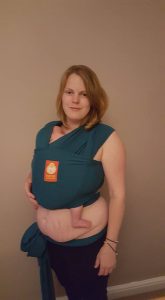
The rate of caesarean sections (both planned and as emergency) is high in Western society, currently between 20-25% of births in the UK (with some regional variation). A caesarean section is major abdominal surgery and some recovery time from this is to be expected, and varies enormously from woman to woman, depending on the reasons for the operation. Women are advised to avoid heavy lifting, “carry nothing heavier than your baby”, and not to drive for at least six weeks after birth. Scars can be uncomfortable and slow to heal for some, and some may experience abdominal pain for a while afterwards. Babies may come early and be very frail for several weeks.
Therefore it is not surprising that many mothers worry that after labour and birth, they may not be strong or well enough to carry their newborns in their arms for prolonged periods. Many will have toddlers at home needing the reassurance of their mother’s loving arms to help them cope with the newcomer’s arrival. Paternity or parental leave is often short; in a few weeks mothers are often required to manage at home alone.
Carrying your child in the postnatal period is important.
The early weeks are vital for bonding and attachment, providing continuity and security, promoting breastfeeding and helping to reduce depression. So yes, we should carry our babies somehow after birth. This doesn’t need a sling; people can hold their babies while sitting down and while reclining just as much as while they stand and walk around; it is the closeness and the contact and the skin to skin that promotes bonding and oxytocin release that matters. It helps to shape baby's brain, and also has a positive effect on yours! Furthermore it can be a great way to ensure any older children still feel connected to you, as your hands are free.
Carrying a newborn baby can be very healing if birth has been traumatic or there has been previous bereavement.
“"I had a tiny baby (4lb5oz) and experienced a traumatic birth, I suffered with PTSD. At times this meant I was very anxious and wanted to keep my baby close to me to be sure she was safe. I started with a stretchy wrap when P was just 3 weeks old. I truly believe babywearing strengthened my attachment with her and helped me to cope every day." Anon
There are some garments of clothing that can be worn in hospital or in the early weeks after birth; mimicking the practice of putting a tiny newborn down the front of the shirt. Some of these garments (known as skin to skin tops or kangaroo care clothing) are designed for keeping baby skin to skin to the parent while reclining, and are not hands-free.
Others are a little more structured (at least two layers of stretchy fabric) and provide enough support for baby that a parent can be hands-free and walk around, similar to a stretchy wrap. These can be most useful in hospital environments for their coolness and simplicity.
Please note that if your baby is premature or very small (under 6lb) it is wise to seek the advice of a specialist baby-carrying consultant; many "newborn" carriers, including some stretchy wraps will not provide enough support without guidance on how to use for these babies with special needs, and many buckle carriers will be much too big.
Breast and bottle-feeding can cause back, neck and shoulder pains, as can prolonged periods of one-sided carrying (which can also affect the pelvic floor and the symphysis pubis.) Being alert to the body’s signals of discomfort and acting on them to frequently redistribute the strain is of great benefit in building up tolerance and strength.
As women recover their strength and are able to do more each day, their mobile carrying abilities will grow too. As womens’ bodies settle back down after pregnancy, with appropriate pelvic floor toning and correction of posture and alignment, carrying will become easier. Furthermore, as baby gets bigger and heavier, the parent’s muscles will adapt to the gradually increasing weight and become more toned day by day, the more often they carry.
“Much of my pre-pregnancy life was spent in the mountains, and carrying my babies after their birth helped me get back in touch with my "home". It enabled me to very gradually and gently regain some fitness away from busy streets, and felt like less strain on the scar area than pushing a double buggy uphill.” Carissa

Keeping a baby’s weight high, snug and central will encourage loading across the large weight-bearing axes of the body, thereby preventing strain on muscles, ligaments and the pelvic floor, and avoiding abdominal pressure. Lifting a baby to the chest should be done carefully, with knees bent and upright posture maintained, and pelvic floor and core muscles engaged and active. Most types of carriers will be possible to use after a vaginal birth, and it will be a very individual and personal choice which. On the whole, most babies enjoy the gentle all-around pressure of carriers that can mould softly around them and be reminiscent of the uterine walls they have just left; and carriers that distribute weight widely across the parent’s upper body will be more comfortable.
If you have a sling that makes your back ache, please visit your local sling library or consultant for a fit check (often a few tweaks make all the difference) or to try an alternative. Cheaper carriers from supermarkets/Ebay often work much less well than better designed carriers and therefore last much longer. "My baby is too heavy for a sling" is usually an issue with the sling not fitting/not being well designed.
Carrying after a Caesarean
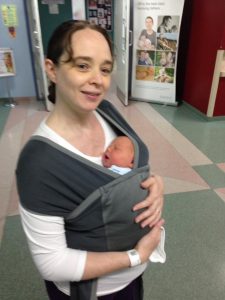
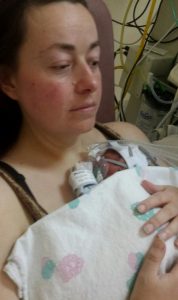
This is also very possible, and it could be argued, perhaps more important post section than after a normal non-instrumental vaginal delivery, depending on how the individual feels after the surgery. Achieving skin to skin as soon as possible is ideal, for promoting oxytocin release and bonding. This is vitally important after a section, especially if it was emergency and traumatic, thereby interrupting many of the biofeedback mechanisms around bonding. It is also important if the section was planned and baby was thus delivered before the biological hormone cascades of labour and birth were able to begin. There can be a strong tendency for women who did not have the birth experience they wished for to feel robbed and deprived of an important part of their baby’s arrival. The subsequent feelings of sadness and grief, or disappointment or that they have let themselves or their baby down somehow, however untrue, can significantly hamper the forming of attachment bonds and play a part in later postnatal depression or other mood disorders.
Mothers who experience this are very likely to find that skin to skin contact and frequent close touch and carrying extremely useful; the process of initiating and mantaining contact and loving touch often acts as a catalyst for the oxytocin release; this positive feedback mechanism will encourage loving feelings to develop despite the less than “perfect” start and get bonding well under way.
As soon as surgery is safely over and a well baby can be given to its mother, skin to skin can begin; resting on the mother’s chest under a blanket, inside a shirt or with kangaroo care clothing. Women are entitled to this skin to skin and should insist upon it; baby does not need to be washed or the cord to be cut before contact is achieved; the sooner the better.
Once mother is ready to move around and carry her child in her arms she can; she is advised to carry nothing heavier than her baby. Some women will choose to use slings immediately, if they feel ready (especially if they are already familiar with slings and feel confident with their use), others will wish to wait, especially if they feel unwell or are in pain. If the mother is confined to hospital and alone for parts of the day and wishes to move around, she may find the sling will help her to feel safer than carrying her baby loose in arms while she is still a little unsteady.
“Having a sling for carrying was very useful, as much easier and less painful than carrying in arms (less stress on abdominal muscles). It was great for bonding, especially since we were having trouble with breastfeeding.” Rebecca
The key factor is to avoid any carrier from irritating the wound or putting pressure on the abdomen. Double layer kangaroo-care shirts or other soft carriers such as stretchy or woven wraps, high-carrying waistband-less meh dais or buckle-tais and ring slings in frontal tummy to tummy carries, may be options to consider. Baby’s legs should ideally be tucked into the M shape, and this will also help to avoid feet kicking against a still tender wound. As the scar and any abdominal pain heals, carriers with more structured waistbands will become more accessible.
General tips about post-partum carrying (including fitness classes)

Participating in postnatal recovery programmes can be useful; however combining carrying and exercise/dance is usually best done with great caution as not every provider will have adequate knowledge about postnatal recovery (pelvic floor and diastasis recti issues) or about the rate and speed of each woman’s individual recovery from birth. Many may have no specialist knowledge about safe sling use or how to protect a baby from sudden shaking movements, as well as how to avoid overloading still-recovering tissues with certain stretching or weight-bearing activities with the extra load of a child in a sling. Walking with a baby in the sling, ensuring good alignment and posture, gradually increasing the speed and duration, is usually enough exercise for most women in the early months. Please do not rush; pelvic floor dysfunction is very very common (14 million women in the UK are known to have an issue, and many many more never seek help and remain undiagnosed). Leaking is NOT normal or to be expected. If you are unsure if your pelvic floor is recovering normally, please see your GP.
Read more about babywearing fitness classes here.
Using a sling allows families to settle back into the normal rhythms of daily life.
Often, older siblings are uncertain about the new addition to the family and uneasy about their place in it; they may need extra reassurance with the birth of a new baby. They may wish to return to their mother’s arms and be close to her body, for reassurance and reinforcing of the attachment bond.
Toddler carrying after birth
“During the intense post-birth bonding period with D I began to use a couple of wraps that had been favourites of R (the new big brother). It almost felt like a betrayal! But one afternoon, R asked if he could come up for a front carry in his favourite wrap, something he hadn't done for ages, and we twirled round the lounge together laughing while my husband cuddled the new baby. I think that was a really healing moment for us and let my eldest know he still had an important place in my arms too.’ Emma
However, toddler carrying after birth is much more of a challenge, especially if the pelvic floor is weak and there is diastasis recti (separation of the abdominal muscles from the stretching during pregnancy). Please seek help if your floor or core are weak.

Involving the whole family!
The post-partum period may be a great opportunity for other caregivers in the family to share the carrying and begin the bonding process. Whole families thrive when children are kept close; it spreads the load of child care around. Partners can carry their newborns, or their older children to provide reassurance.
“Carrying our eldest son (3) enabled my wife to give her attention to our new baby. It gave us much needed daddy and son bonding, at a time when he was feeling insecure with the arrival of the new baby.” Mal
Remember, it is the closeness and contact that matters; in arms carrying is as valuable as using a sling, and the shifting of your growing baby around your body as your muscles tire will help to rebuild your strength and endurance. Sharing the carrying with other members of your family will help to strengthen relationships and reduce the strain on your own body too.
Carrying Matters - all about babywearing safety, a guide to slings, and why connection matters
Welcome to the Carrying Matters website, run by the award-winning Dr Rosie Knowles.
It is important to support caregivers as they build a happy brain for their children. Soft touch and loving connections play a vital role in this. There are so many benefits of babywearing, which can be explored in this site. Babywearing safety matters; my guide to slings and my commitment to sling education will help parents and those who support them feel confident with sling use at every age.
Listen to Rosie talking about the 4th Trimester period in a new family’s life.
Search my website here
The positive effects of soft touch, close loving contact, and meaningful connections are enormous, and investment early on in family life is well worth it. Holding and carrying is connection; it matters to children, their carers, and society. The close contact helps to build a happy brain, and creates the relationships that buffer against adversity and promote resilience and long term positive health outcomes. It also helps mothers to survive the “4th Trimester” period and the months and years ahead. Here you can find everything you need to know about how to carry your baby safely and well, why babywearing is so normal and useful, how to choose a baby carrier, and help for all sorts of circumstances.
This page is run by Rosie Knowles, the author of the book Why Babywearing Matters (you can get a signed copy here). She is a GP in Sheffield, a carrying advocate and babywearing expert. She is passionate about supporting parents and carers to be close to their children; holding, soft touch and carrying matters in so many ways.
Recent Blog Posts
- Arms In or Out?
- Journeys to Recovery?
- Carrying a child with congenital heart disease, Abbie’s story
- Adversity and connectedness in the early months
- Parenting Criticism
- The importance of soft touch for infant development
- Babywearing in the time of Coronavirus
- “Babywearing for All”- helpful or harmful?
- Carrying with a weakened pelvic floor
- Babywearing and autistic caregivers
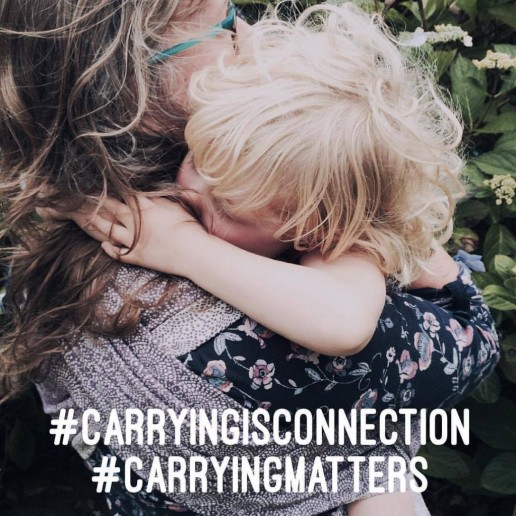
The simple act of connecting with a small person through the medium of loving touch has powerful and long-lasting effects on both child and carer. Babies need to be held close to encourage normal physiological and psychological development, especially in the early months. Every child needs love and connection to grow normally: the absence of responsive and supportive relationships that involve loving physical touch will hamper a child’s potential. Mothers heal best with their babies close to them.
Children thrive when they are carried, resilience builds and families flourish when the needs of all its members are met. Carrying is connection; carrying matters!
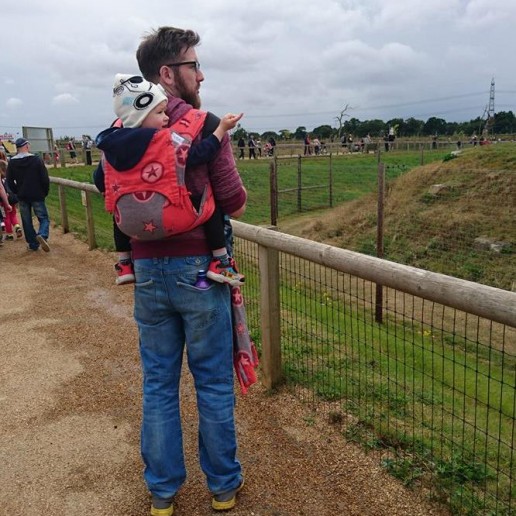
Keeping babies safe in any kind of baby sling or baby carrier is of paramount importance. The first most vital issue is to ensure that baby’s airway is open and unobstructed, with chin off the chest and the ribcage well supported. Babies’ temperatures should be considered too; they are surprisingly warm, and overheating can cause problems. Read more about sling safety here.
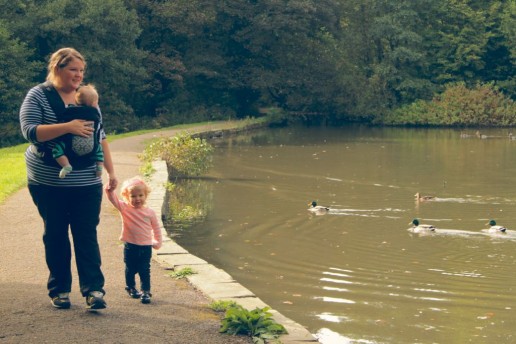
Secure attachment to other people is vital to human health and wellness; we thrive on relationship, on belonging. Such healthy attachments are the bedrock to future positive mental health and enjoyable relationships. However, 40% of children lack secure attachments, and are significantly disadvantaged. Encouraging carers to spend more time in close physical contact with their children is one way to improve children’s resilience and support everyone’s mental health. Soft touch is an essential part of building a happy brain and positive bonds that last a lifetime.
Read more about the importance of building secure attachments here, and how encouraging close physical contact can help build the resilience that children need to thrive despite adversity.
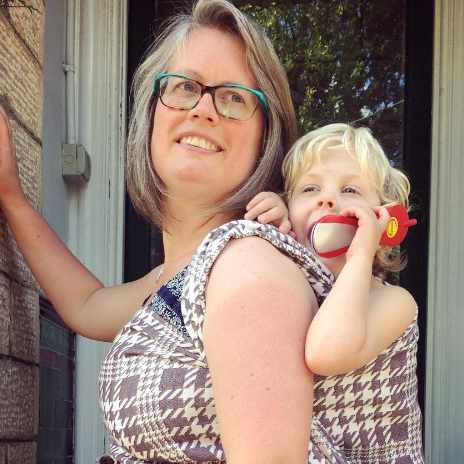
About Rosie
“I am a mum of 2, a family doctor in the UK (a GP), and a passionate advocate of building secure attachment relationships between children and their carers, due to the long lasting effects this has on future health. I believe that carrying children plays a large part in building such bonds, be it in arms or in a sling. With Carrying Matters, I focus on providing accessible information and education about this for parents and the professionals who support them. Sling and carrier use is not a new concept at all; but our Westernised society has lost the communal sharing of knowledge. We are no longer surrounded by a community of people who can help us get to grips with parenthood and share the load, so we need support in newer and more structured ways. This is what I do; empower people to keep their children close in a safe and positive way.”
Her book, “Why Babywearing Matters”, was published by Pinter and Martin in May 2016. It has been translated into several languages over recent years. She has written for a wide range of publications, including Juno Magazine, and has a regular freelance blogging role for Boba (links can be found in the Blog section).
She founded the Sling Pages, an independent website listing all the known sling professional resources in the UK and Eire, and the Building Bonds Project, a CIC supporting families in times of crisis and financial hardship to access good quality and safe carriers.
She is a practising GP in the UK with a particular interest in holistic medicine as well as children and women’s health and medical ethics. She began her career in hospital medicine but switched to general practice because of its flexibility with family life and the opportunities it presents to be more closely involved with communities, from cradle to grave. She has two children of her own, who have both been carried happily, and a husband who works alongside her at their local Sheffield premises. Rosie founded the Sheffield Sling Surgery and Library in 2013 and has supported thousands of parents across the South Yorkshire region, helped by a volunteer team of fantastic, committed parents who have found carrying their own children to be life-changing. They all want to help their fellow parents to discover this for themselves!
Rosie has won several awards for her work in this field; the Babywearing International Vijay Owens Babywearing Advocacy Award for Lifetime Achievement in Promoting Babywearing in 2016 and the 2019 Association for Infant Mental Health AIMH (UK) award in recognition of those who have highlighted and promoted infant mental health in their discipline.
Rosie developed the “Fourth Trimester” sling meet model with her colleague Lindsay Snow, focusing on the needs of parents with bumps to four months. Families often struggle to deal with the biological needs of their new baby within the confined structures and expectations of modern society, which can be damaging to the building of secure attachments.
The needs of baby and caregivers are both important, as is the mental health and happiness of the whole family. Human beings were not designed to live in small isolated units but in supportive social groupings.
Holding babies close (in arms or in a soft sling) can be a very useful tool for families struggling with mental health disorders, pre, peri or postnatally. The close contact and the soft touch has biochemical hormonal effects that can help to reduce anxiety, improve feelings of wellbeing and connection, as well as lifting the mood. Read more about this here.
You can find your local sling library or sling meet by searching the Sling Pages resource, get in touch with them!
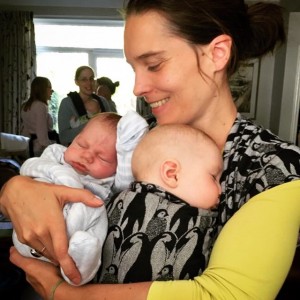
Using a sling (carrier) helps parents to keep their child as close as their biology needs, while also being able to function as adults in a demanding and inflexible world.
Rosie trains carrying advocates and sling/carrier peer supporters and sling consultants, running courses in Sheffield and nearby. She has trained health care professionals, sling librarians, fitness course leaders and interested parents. See more here.
She lectures at conferences and gatherings around the UK and Europe about a range of topics, all related to early years parenting and how slings and carriers can make a huge difference to babies, their carers and to society.
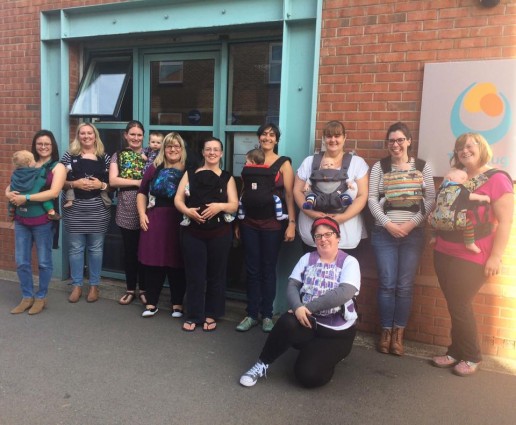
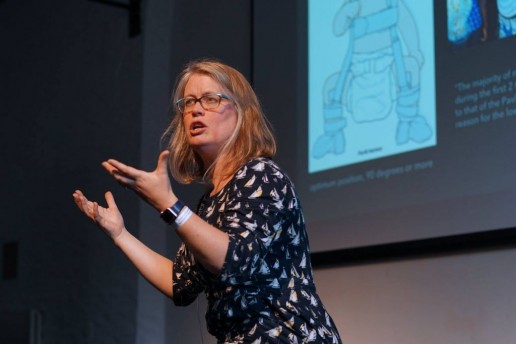
“I’d highly recommend any enthusiast to attend this course. I found it thoroughly enjoyable and look forward to being able to use this new knowledge to help more parents discover the benefits of babywearing, as I have.”
“Rosie is a wonderful teacher, very clear and good at explaining. I felt she was well educated in her field and able to answer any question thrown at her. Also very friendly which made me feel comfortable and relaxed in a learning environment and confident to ask questions.”

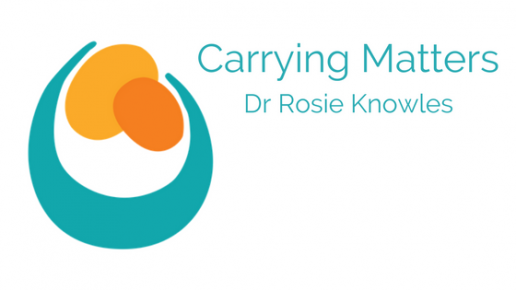
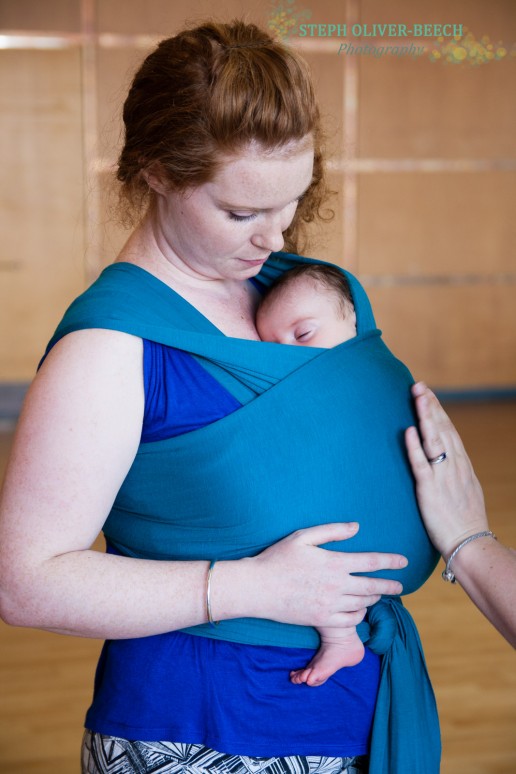
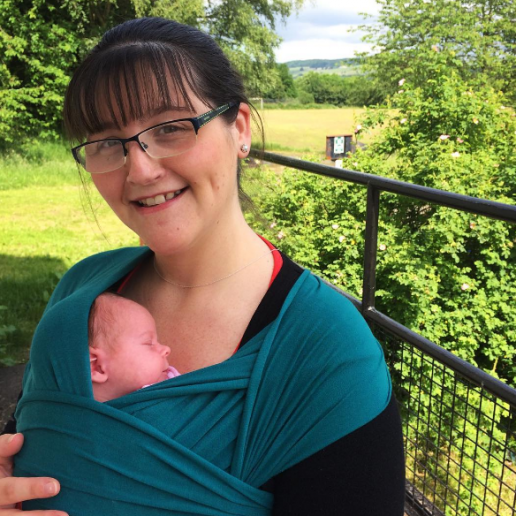
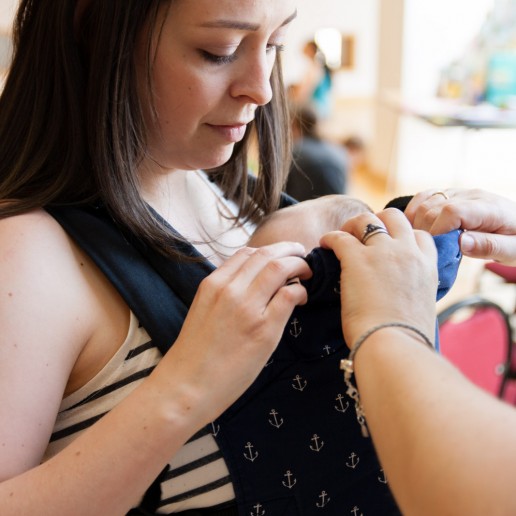
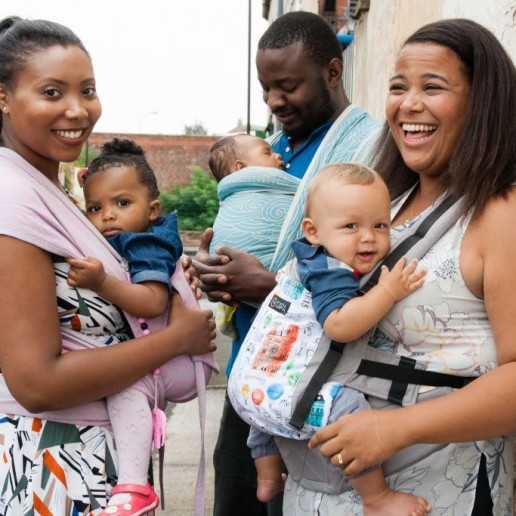
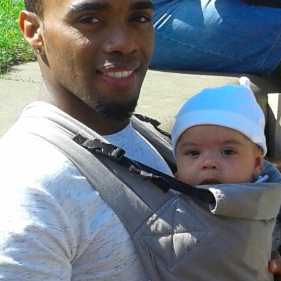
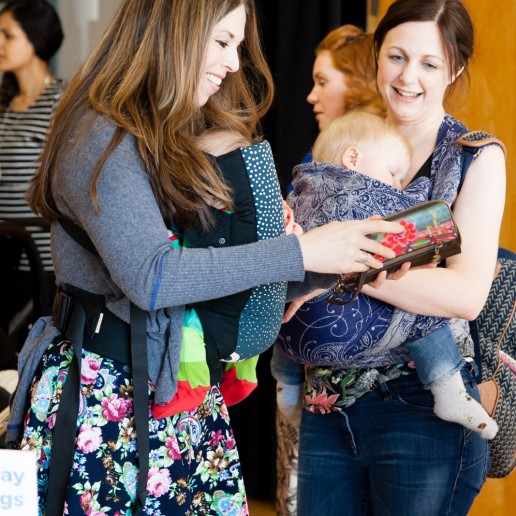
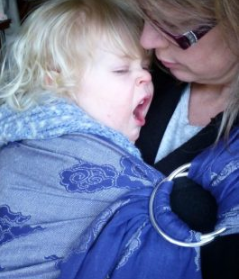
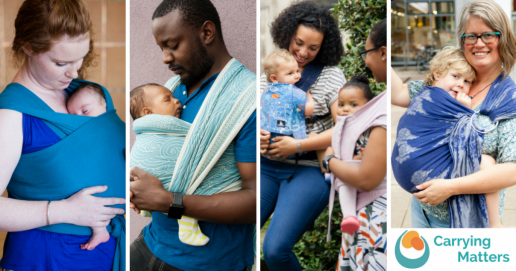
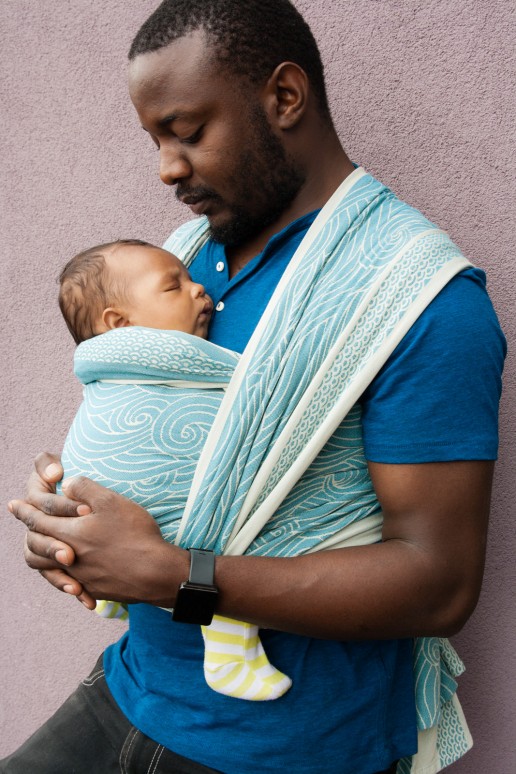
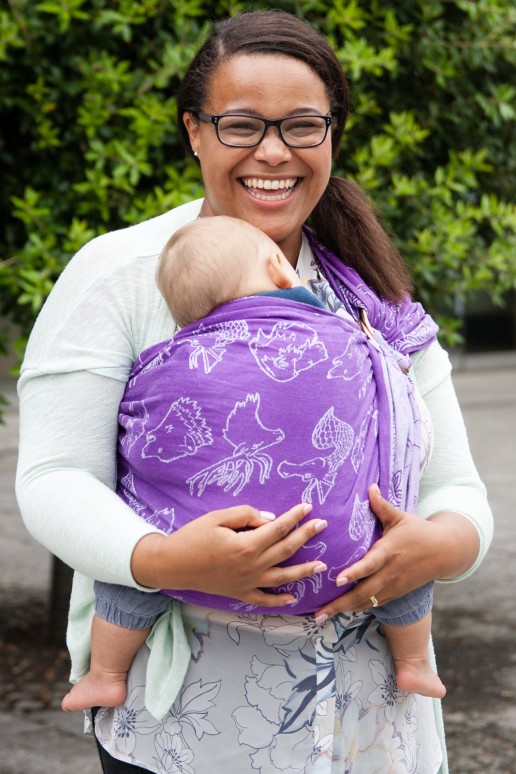
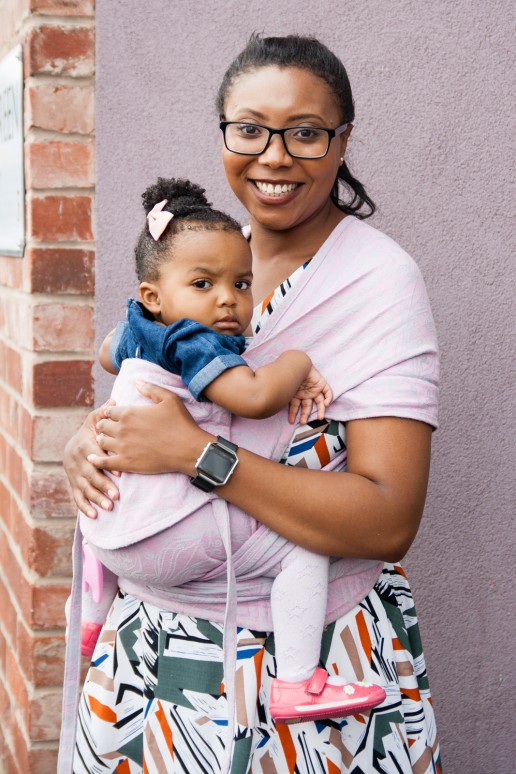
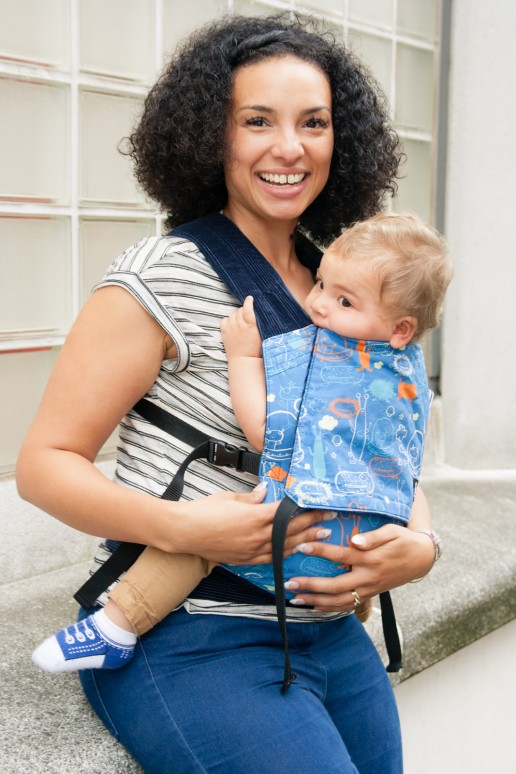
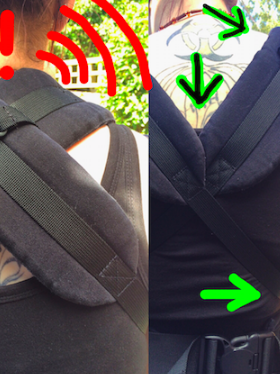
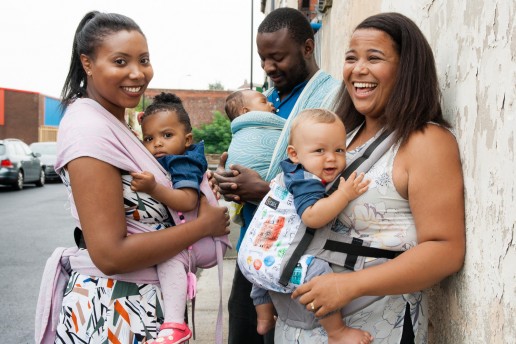
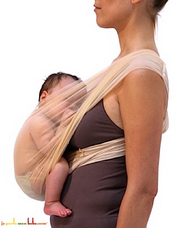
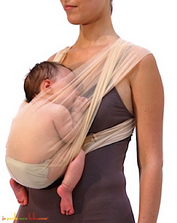


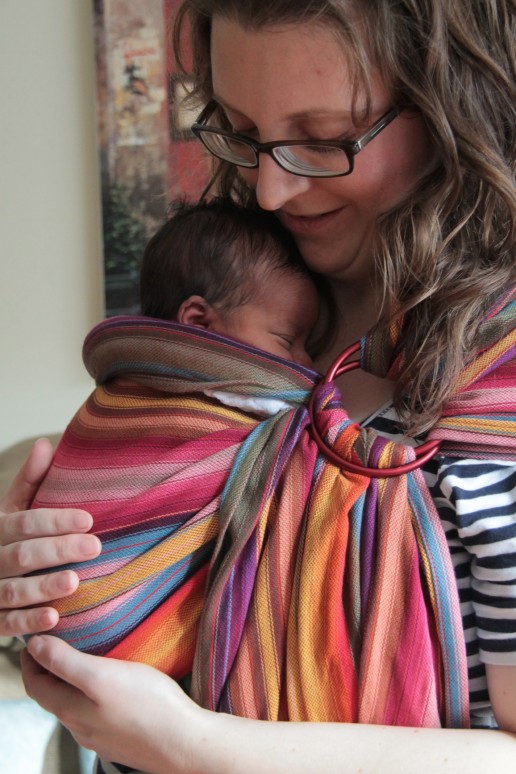
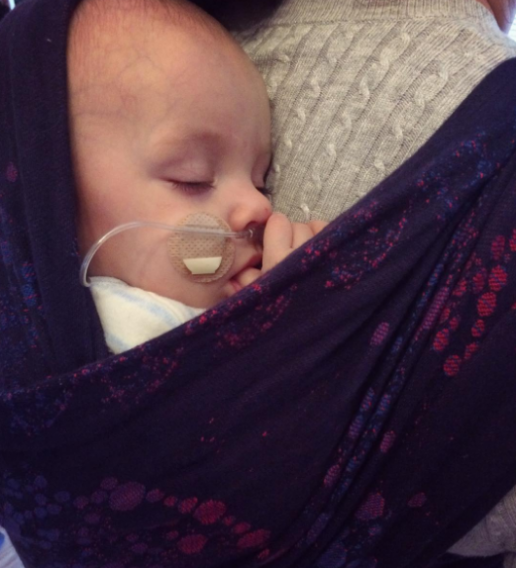
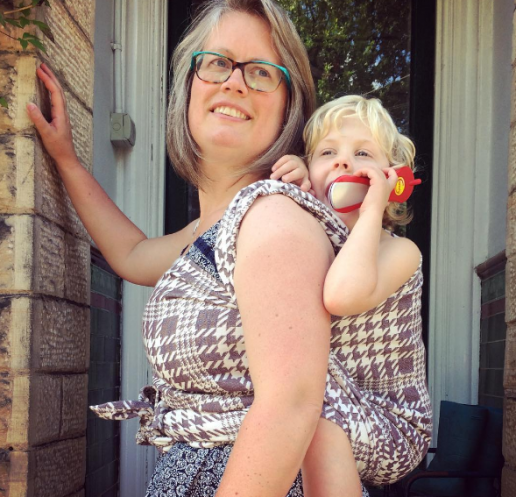
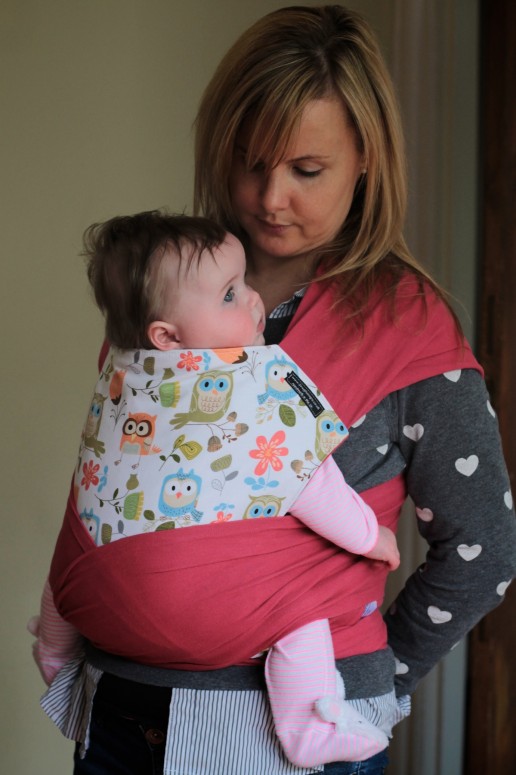
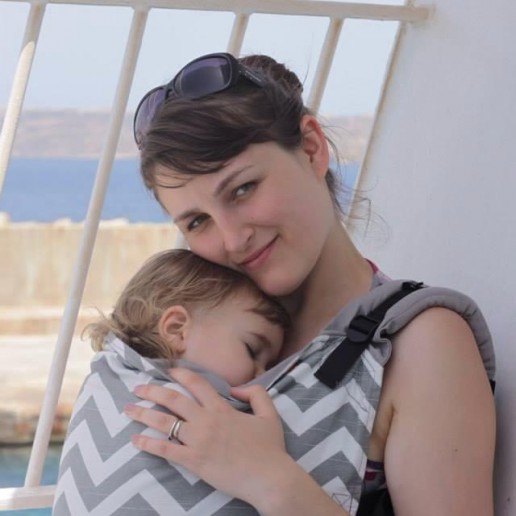
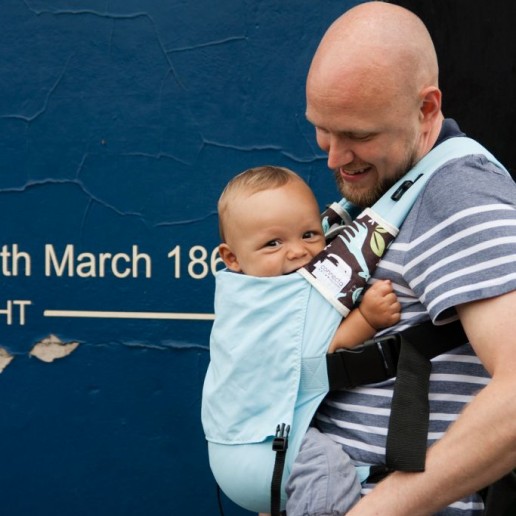
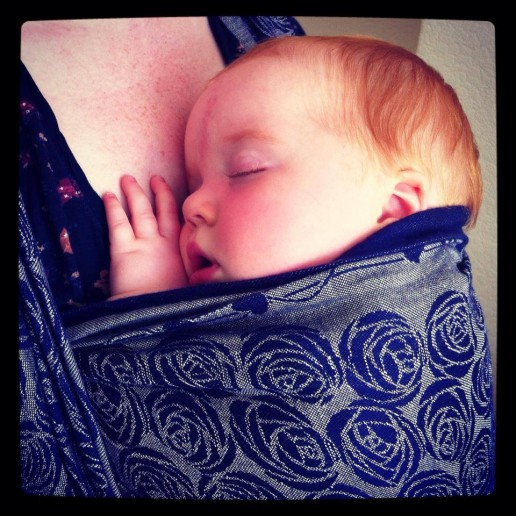
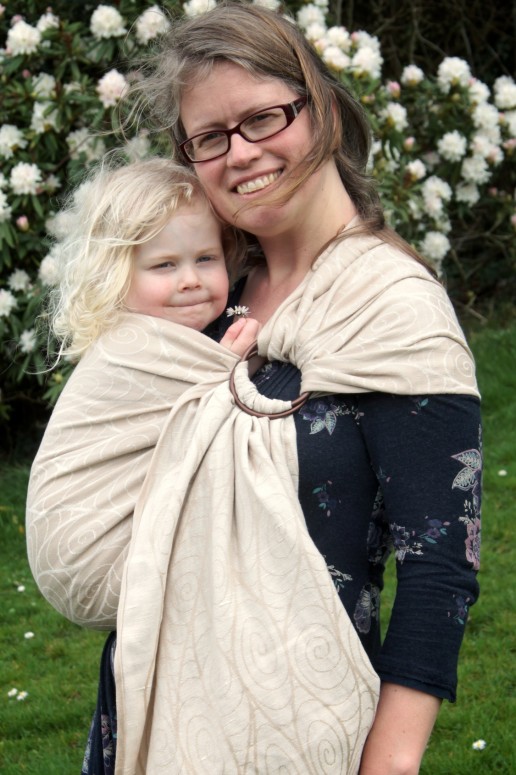
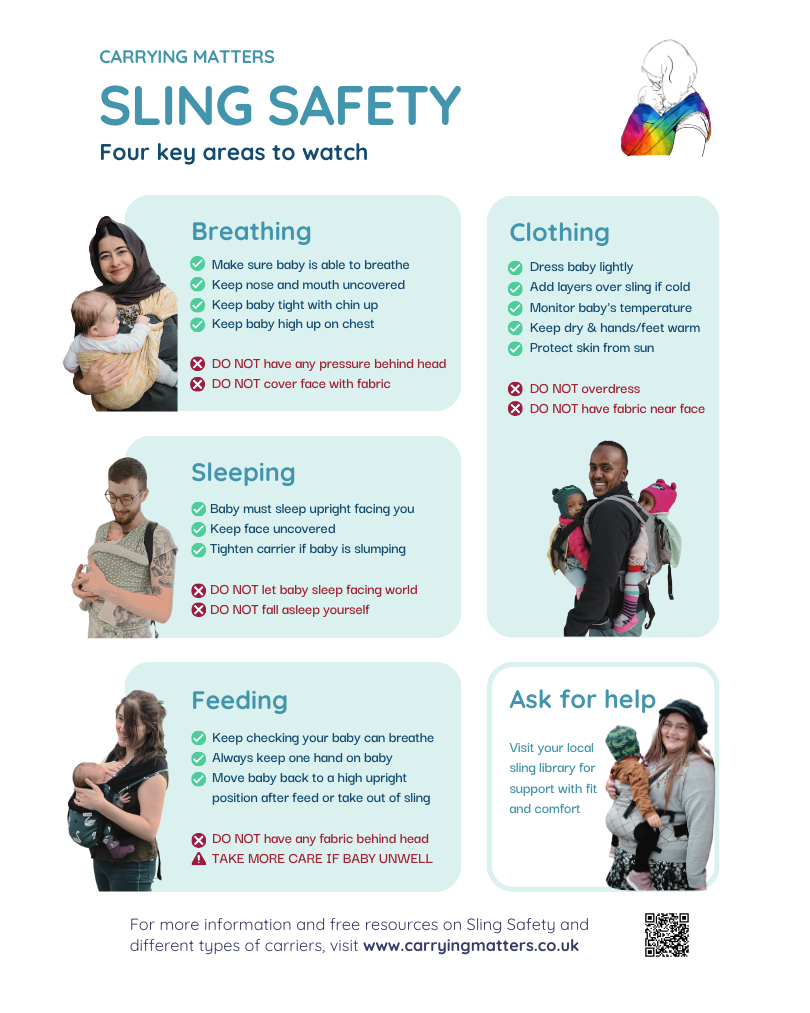
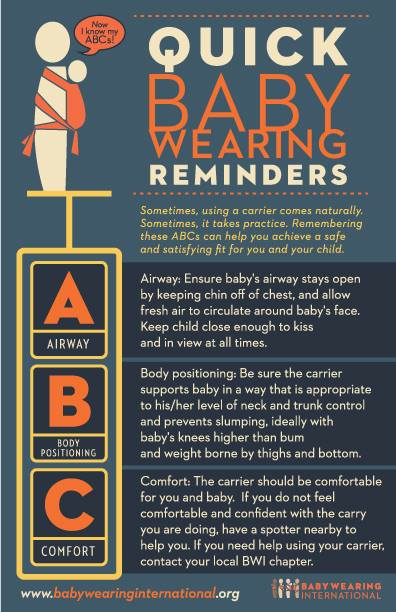
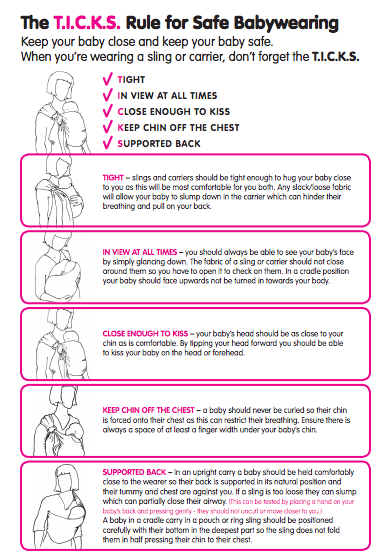

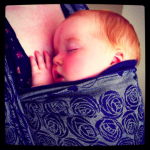


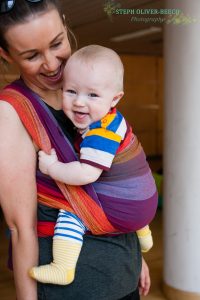
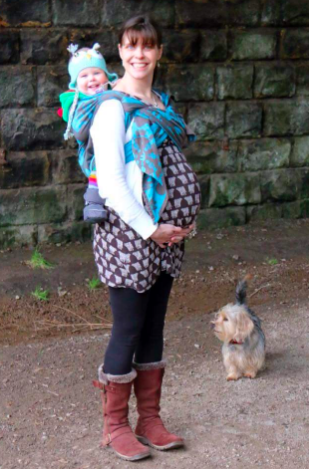
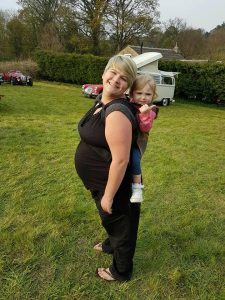
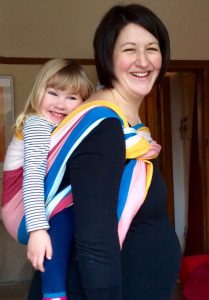
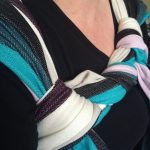
 Third Trimester
Third Trimester